COMMUNITY PILLARS
Mother Atum Azzahir on resurrecting Black culture and heritage
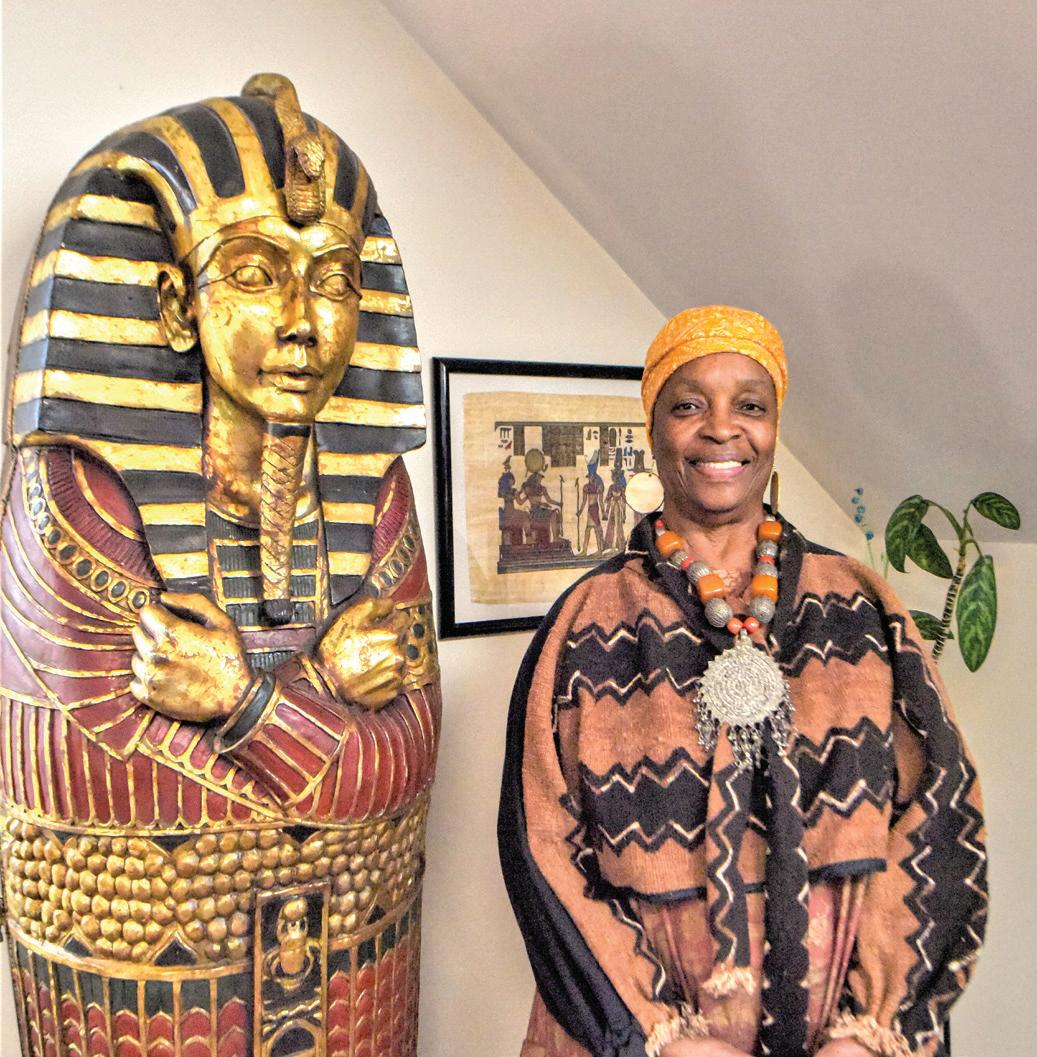
Community Pillars is an ongoing series that will showcase people with an enduring legacy of selflessly serving and empowering the community.
By Al Brown Contributing Writer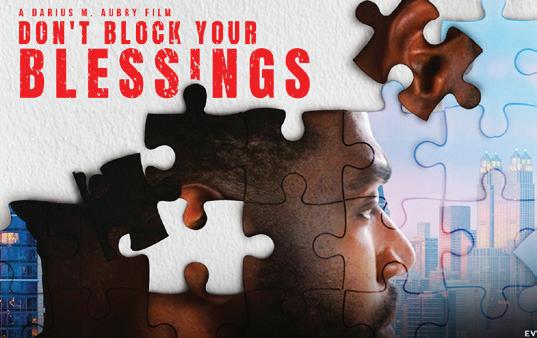
Mother Atum Azzahir is one of the area’s more renowned
authorities on cultural wellness and recovery of the African voice and ways of learning and sharing ancestral knowledge.
Since 1996, through the Cultural Wellness Center (CWC), she has helped Blacks self-identify using a compre hensive spiritual, heritage
By Henry Pan Contributing WriterAdvocates
for a land bridge over I-94 in Rondo say their pro posal goes beyond building over a freeway: They want to build housing, a way to generate Black wealth, and to right past wrongs.

“We envision housing, that
was something [that was] cer tainly taken, and businesses, business incubation,” said ReConnect Rondo Executive Director Keith Baker. “Creating a social fabric within a com munity that was something that was destroyed, creating a way in which a community can become vibrant now.”
And to build it out, they’re taking advantage of transporta
tion investments that may hap pen later this decade as well as funding from private compa nies and government sources, which they are also using as an opportunity to build a cadre of Black entrepreneurs.
The idea for a land bridge was conceived when Metro Transit and the Metropoli tan Council were planning to build the Green Line in 2009.
Activists were upset that the Green Line would not serve them, so they sued. Their vic tory inspired something bigger: Why not build a bridge over a freeway to replace the land that was lost?
Such an idea would not be the first in Minnesota, as Duluth has a park above Interstate 35 northeast of
THREATS TO ELECTION OFFICIALS
U.S. Capitol. After the 2020 election, the Trump campaign accused the two Black women of committing election fraud in Fulton County, Alabama—a totally false and disproven claim.
THIRD IN A SERIES
This is the third of MSR’s “Elections Under Attack” series that looks at four threats to our elections growing out of the Big Lie that the former president won the 2020 election. Articles in the series look at each of these threats to democratic elections in the United States, with an emphasis on Minnesota.
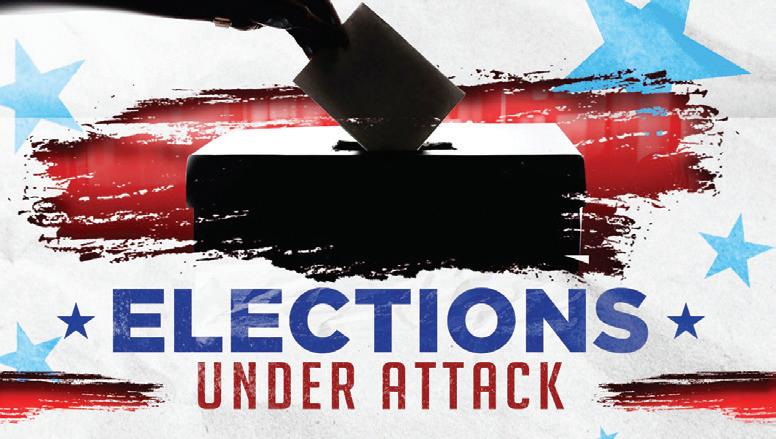

 By Mary Turck Contributing Writer
By Mary Turck Contributing Writer
Elections depend on loyal election offi cials, many of them volunteers, all commit ted to free and fair elections. Some are paid, full-time government employees, working year-around to make sure that elections run smoothly. Some are your neighbors,
volunteering from 6 am to 9 pm in polling places on election days.
Now more than one in five U.S. elec tion officials say they may quit because of threats and political pressure. In August, a U.S. Justice Department task force report ed investigating more than 1,000 threats against election workers, and said more than 11 percent could warrant criminal
Rent control continues to evolve in St. Paul
By Cole Miska Contributing WriterSt. Paul’s rent control ordi nance continues to be a work in progress as the St. Paul City Council voted last month to pass ordinance 22-37, which will make several amend ments to Chapter 193A, a residential rent control sec tion of the St. Paul Code of Ordinances.
Chapter 193A was passed on a ballot initiative last
November by St. Paul voters and went into effect in May of this year. The measure pro hibits landlords from raising a property’s rent by more than 3% per year, but with “right to a reasonable return on invest ment” exceptions.

Ordinance 22-37 was introduced this summer by Council Member Chris Tolbert and passed with only Council Members Mitra Jalali and Nel sie Yang voting in opposition.
prosecutions because of threats of violence. Threats reported to the Justice Department are the tip of the iceberg: most go to local police or are not reported at all. Wandrea “Shaye” Moss and her mother, Ruby Freeman, gave one of the most dra matic accounts of threats against election officials in their testimony to the House committee on the January 6 attack on the
The harassment and threats that fol lowed included death threats and barely veiled references to lynching. Election deniers forced their way into Shaye Moss’s grandmother’s home and threatened her. Ruby Freeman testified:
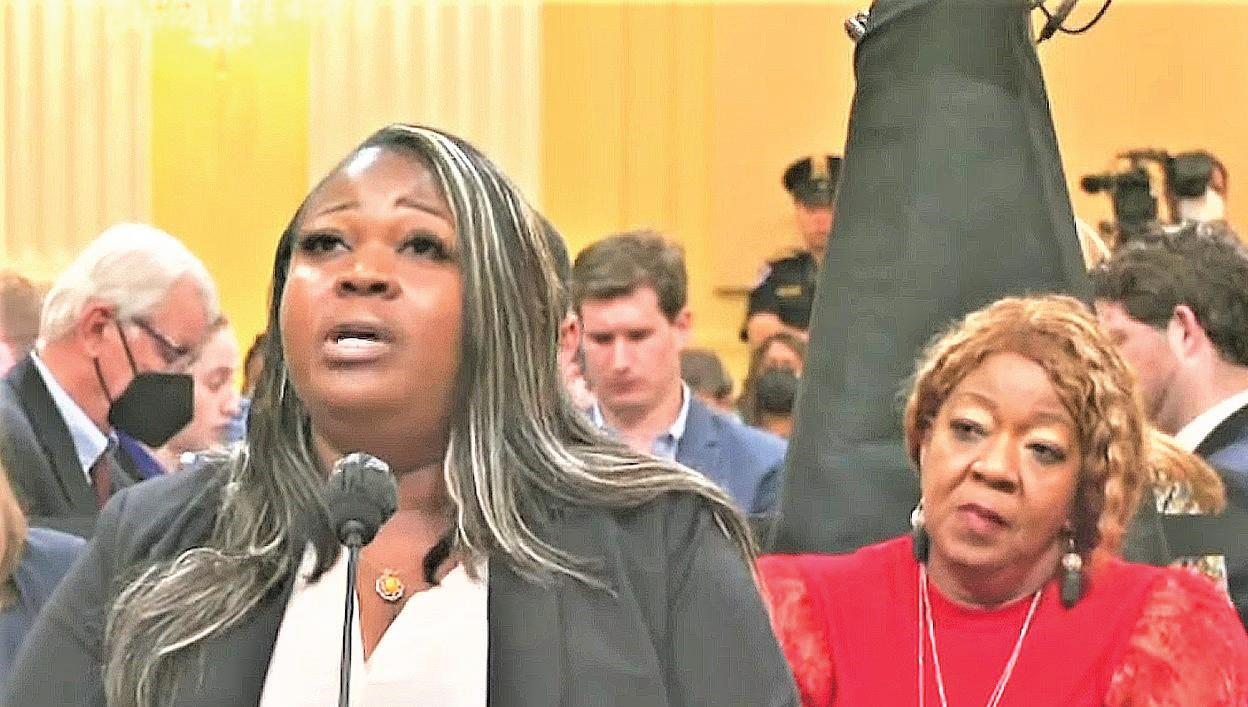
“There is nowhere I feel safe. Nowhere. Do you know how it feels to have the presi dent of the United States target you? The president of the United States is supposed to represent every American. Not to target one. But he targeted me, Lady Ruby, a small business owner, a mother, a proud Ameri can citizen, who stood up to help Fulton County run an election in the middle of the pandemic.”
During an August 1 hearing on protect ing election officials, Assistant Attorney General Kenneth Polite Jr. discussed how the Justice Department’s Election Threats Task Force is prosecuting people who have threatened election officials. To date, the task force has investigated more than 1,000 complaints and has prosecuted five people.
St. Paul narrows police chief prospects to five
By Henry Pan Contributing WriterThe city of St. Paul has announced the names of five candidates who are being considered as the next St. Paul police chief. The public had an opportunity to learn more about them this week.

Four of the five candidates currently serve with the depart ment. They are Pamela Bar ragan, Kurtis Hallstrom, Axel Henry and Stacy Murphy. All of the officers have some form of complaints filed against them, according to records obtained from the Communities United Against Police Brutality data base.
Barragan joined the depart ment in 1996 and currently works to foster partnerships with other government agen cies and organizations. She
has one complaint dating back to 2000, which involved an “improper procedure” and was sustained. She was given an oral reprimand.
Hallstrom joined the depart ment in 1999 and is a senior commander for the Eastern District, which includes much of the East Side. He has three complaints dating to the early 2000s, of which one involving “improper procedure” was sus tained. For that, he was given
an oral reprimand.
Henry joined the depart ment in 1998 and currently commands the Narcotics, Financial Intelligence, and Human Trafficking Division. He has four complaints, most of which date to his early days as a St. Paul police officer. Two complaints concerning him fol lowing “improper procedure” were sustained, with a com plaint in 1999 resulting in a written reprimand, and another
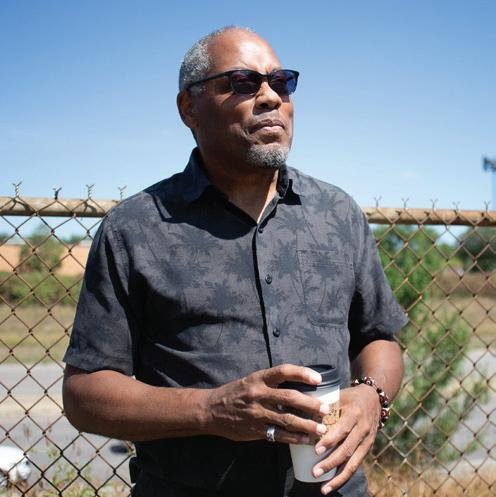
complaint in 2002 resulting in an oral reprimand. One com plaint from 2003 was closed.
In 2011, Henry and some 40 officers received complaints for improperly using the state drivers’ license database to look people up. A site called “Minne sota Creeper Cops” says he used the database for this purpose seven times. A St. Paul spokes person said the complaint was unsubstantiated and closed.
I-94 plan seeks to resurrect a destroyed communityKeith Baker of ReConnect Rondo Photo by Henry Pan Architectural rendering courtesy Design by Melo and Visuals by James Shaye Moss (l) and Ruby Freeman, Georgia election workers, at the Jan. 6 committee hearings in June of 2022 Images courtesy of MGN


Metro
New U of M social work leader brings a passion for fairness
By Tiffany Johnson Contributing WriterDr. Joan Blakey is the new director of the University of Min nesota School of Social Work.
After starting this role in July of 2022, Blakey made history as the first African American wom an to serve in this position and the second African American to do so, following only James Goodman, who served as the director from 1975 to 1977. “He and I have been the only people of color that have been in this role,” she said.
Although she is serving in a new capacity, her roots at the University of Minnesota run deep. “I was an undergraduate student here, and I got my MSW (Master of Social Work) in ’99. So the school has a special place in my heart because of that,” she explained.
As Minnesota finds ways to heal after a trying past few years, it is perhaps the perfect moment for a leader like Joan Blakey to emerge. “There’s a lot of good stuff here. I feel like this is a good school. The interim director Joe Merighi and the director before that, John Bricout, and the direc tor before that have really laid a great foundation for me.”
In this unique time, Blakey considers ways in which she can effectively build upon this foun dation to serve the greater good of her students and the commu nities that they will serve in the future.
“How do we make our educa tion more accessible? How do
we make it more relevant? How do we make it so that students leave here and can immediately apply what they are learning to their work?” she said. “I think about the future of social work and education and how we’re going to educate a new genera tion of social workers.”
While Blakey embodies the essence of social work and its rippling impact on greater soci ety, it may come as a surprise to some that social work was not always her career plan. “Growing up, I wanted to be a judge. That’s what I really wanted to be.
“In order to be a judge typi cally you have to be a lawyer. I
shadowed a lawyer after I gradu ated [undergrad]. And I realized that the law wasn’t always about justice. The law wasn’t always
womb I’ve always been like, ‘That’s not fair.’ What is fair, and justice, are really a core part of my makeup,” she stated.
Blakey would go on to join a mobile crisis team where she would respond to emergency occurrences involving families and domestic conflict in and around her community. It was during this season of her life that she happened upon a certain brochure that she had received in the mail.
“It was about the [University of Minnesota’s] School of Social Work and the mission of social work about helping those that were voiceless, about really ad vocating for change and justice for marginalized populations… I was like, yep! I’ve found the right profession,”
Before coming back to the University of Minnesota in her director position, she served as the associate dean of academic affairs at Tulane University in New Orleans. “I love administra tion because I get to be a part of shaping student’s education and what that educational experi
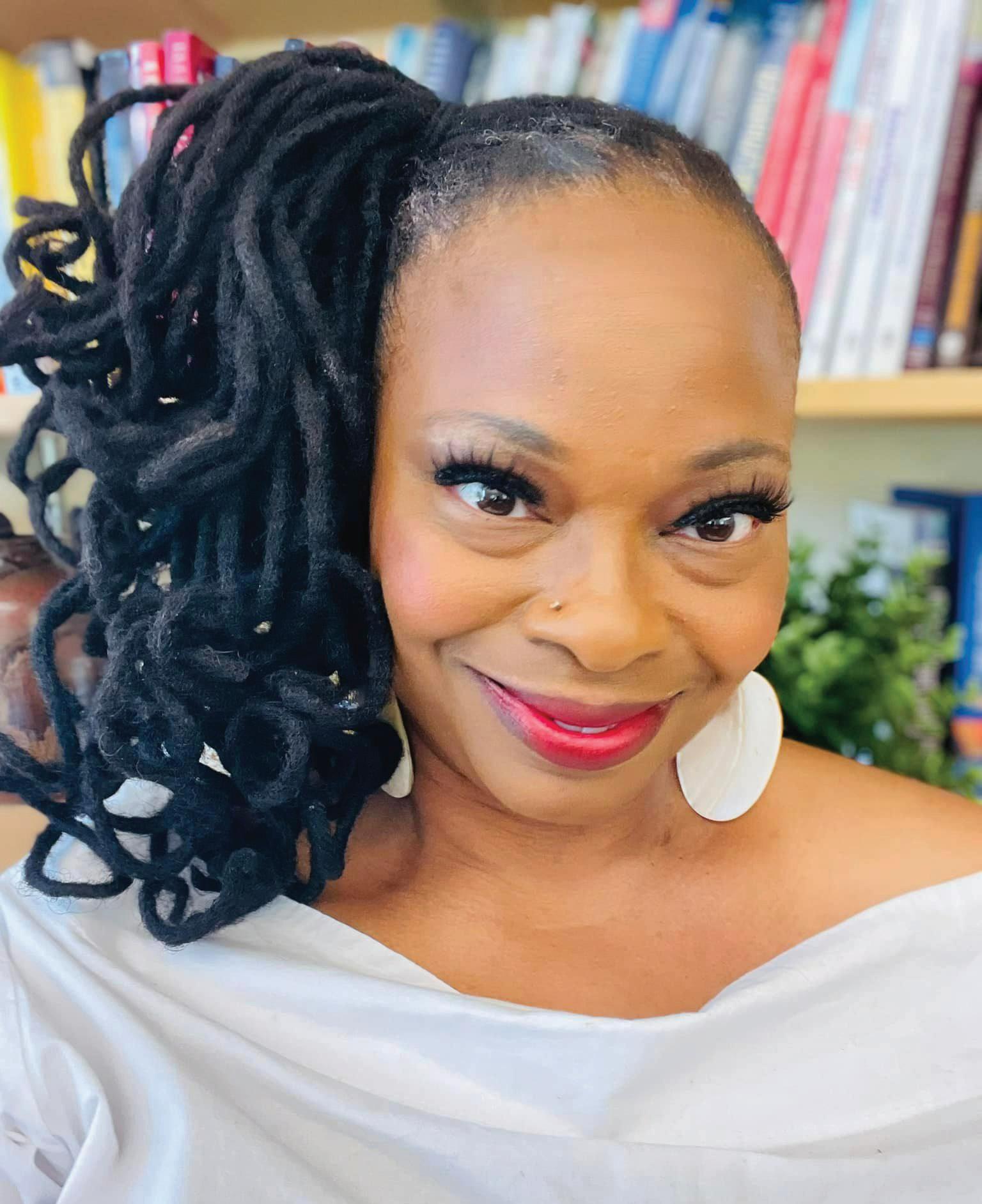
I want to be a part of students leaving my program inspired to change whatever part of their world that they feel passionate about.
about fairness.”
This realization became a pivotal moment for Blakey. “My mom said coming out of the
Photo of the Week
Hues of the season
foliage
as
Natural
shot of fall
Cities
ence will be. Because again, my education was not perfect, but it has opened up worlds for me.”

This month the University of
Minnesota will host a private event as a formal welcome to Dr. Blakey in her new position.

Blakey remains energized to build upon the great work of the School of Social Work, Dr. Blakey herself being an inspiring example.
“I want to be a part of students leaving my program inspired to change whatever part of their world that they feel passionate about, but nonetheless inspired
to do so. I want to be a part of shaping that vision, because I think that that’s the only way we are going to change our world—if people feel inspired to do so.”
Learn more about the Univer sity of Minnesota School of Social Work at www.cehd.umn.edu/ssw

Tiffany Johnson welcomes reader responses to tjohnson@ spokesman-recorder.com.
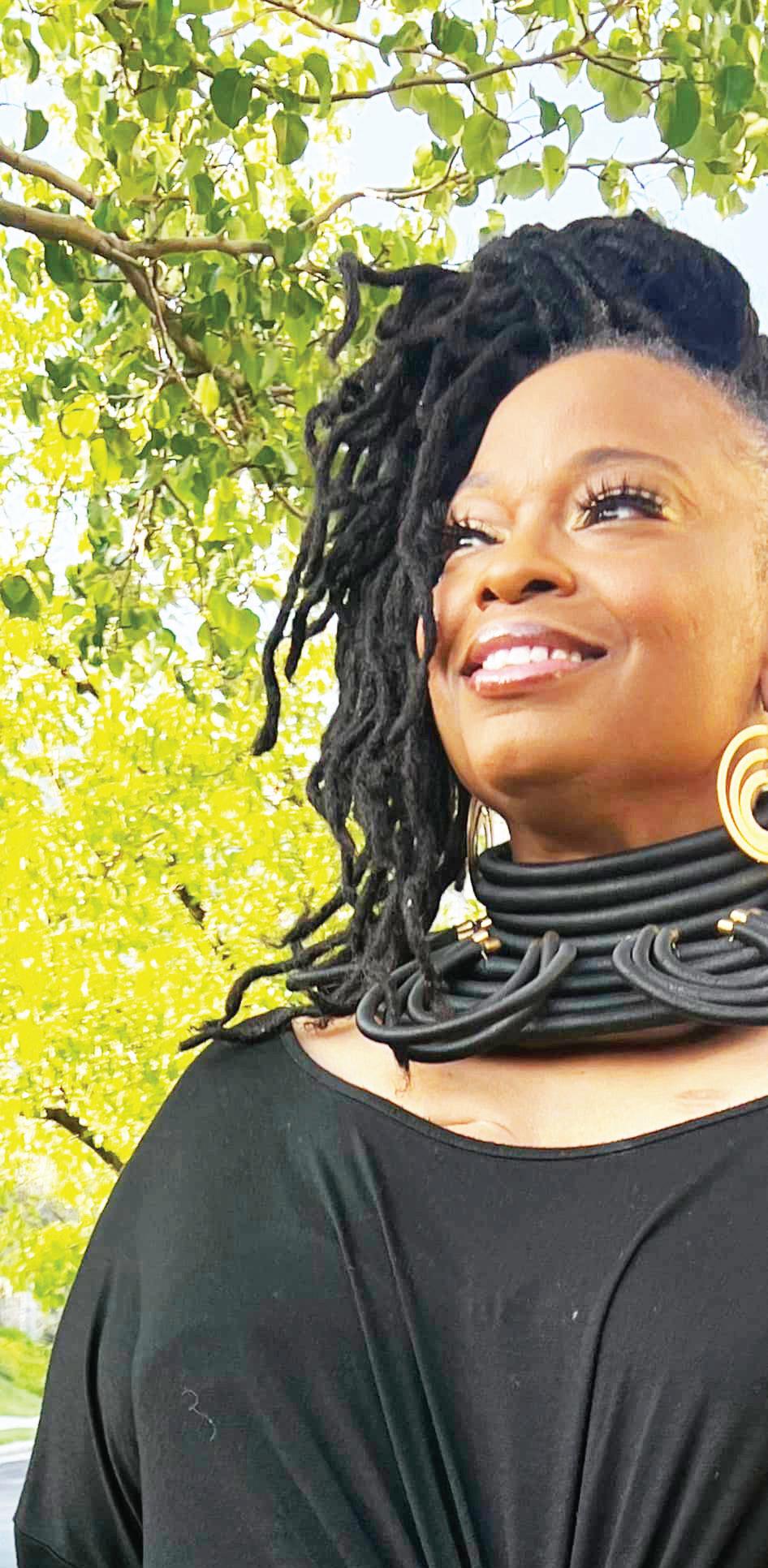
 Photo by Paige Elliott
Photo by Paige Elliott
Metro
Girls Taking Action and Boys of Hope tap the power of mentors
By Sheletta Brundidge Contributing WriterAn enthusiastic group of adults are preparing to be come mentors to at-risk youth through Girls Taking Action and Boys of Hope, operated by the husband and wife team of Dr. Verna Cornelia Price and Brother Shane Price, through their Power of People Leadership Institute.
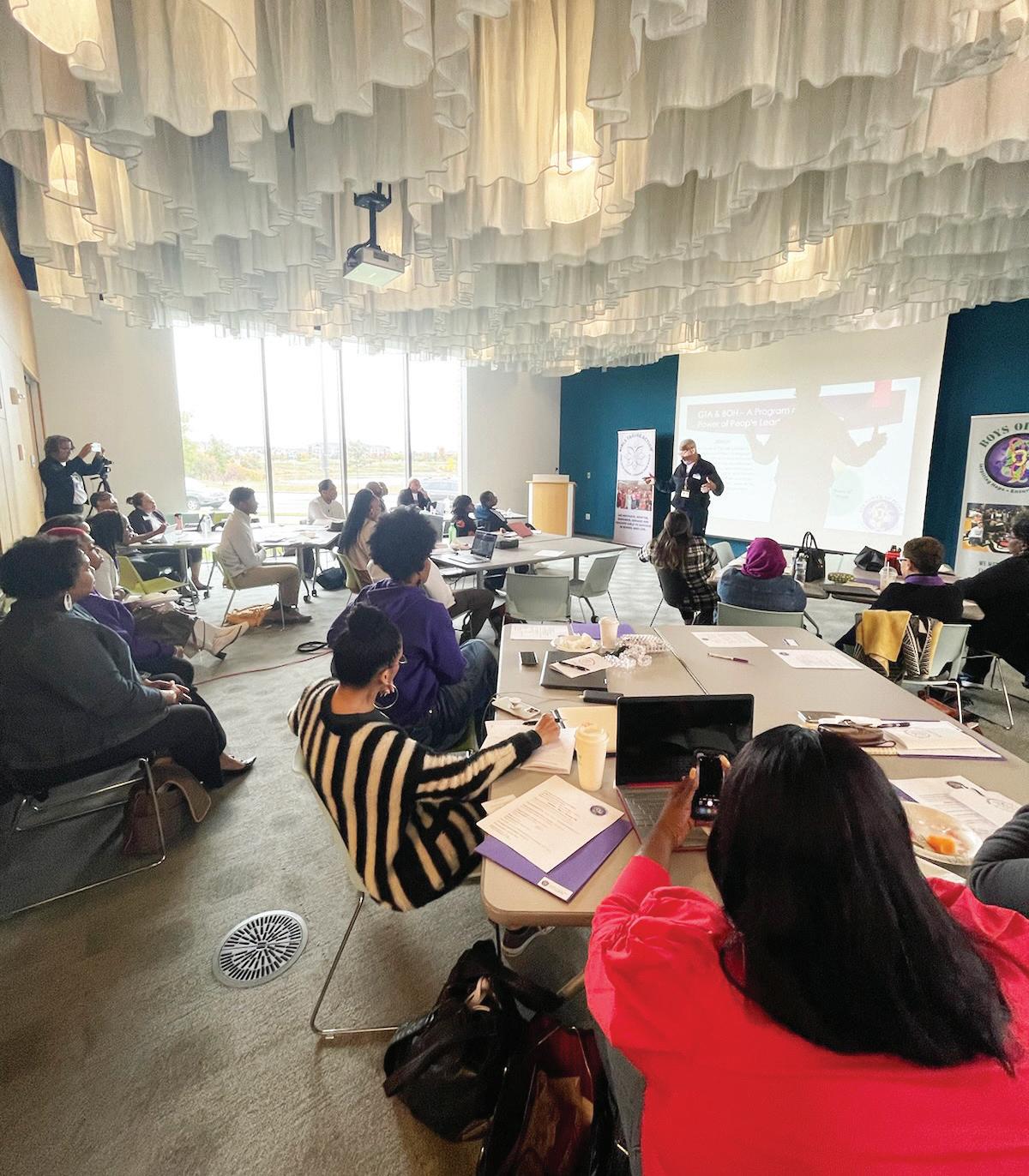
This year, the programs will expand to serve close to 1,000 Minnesota boys and girls in 27 different junior and senior high schools.

Girls Taking Action and Boys of Hope are both seeing a high level of interest from students, so the demand for adult role models is also grow ing. The program is adding dozens of mentors to “inspire, motivate, empower and en gage young people to be suc cessful in school and in life,” according to Verna Price.
“Coming out of the pan demic, with our young peo ple being isolated, they re ally suffered. They lost a lot of ground,” she said. “We know that a connection to a caring adult, a mentor, makes a huge difference in the lives of our girls and boys.”
Eighteen years ago, Verna Price founded Girls Taking Ac tion in one Minneapolis school. Three years ago, its successful approach was modified into the Boys of Hope program.
“We are disrupting the school-to-prison pipeline, but we don’t go in talking about that,” said Dr. Shane Price.
“We have a formula. We are
trying to divert students to higher education, community college, trade schools. The students need the mentors to open up that window.”
In a two-day training pro gram in Maple Grove on Oc tober 7-8, the mentors not only reviewed the program’s core components and its cur riculum, they also got fired up with inspiring messages from the Prices. The founders en couraged the new mentors to “speak with authority” and cre ate a positive environment for their young participants.

“They don’t need you to play with them,” Shane Price
told the group. “Treat each with extravagant civility and kindness, but you draw that line. They’re looking for someone to show them the way. You’re not their friend, their little homie. They do not call you by your first name. We are setting the stage for respect.”
Dorothy Nins, now devel opment director for the Power of People Leadership Institute, began as a Girls Taking Action lead mentor three years ago. She said that while she knows she has made an impact on youth through her work, she has also personally benefited from her involvement.
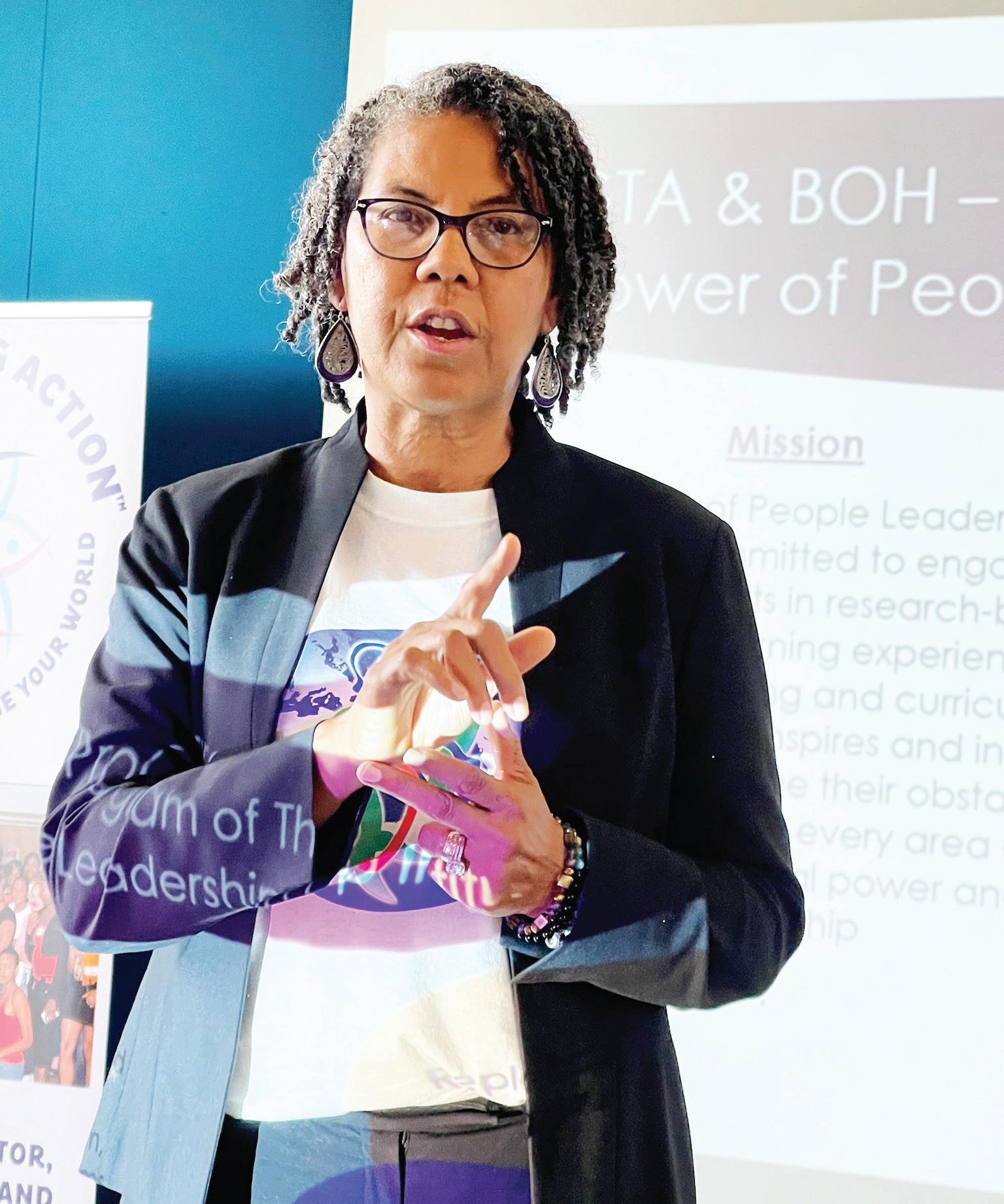
“You can’t empower other people without being em powered yourself,” said Nins. “It invigorates me to go into schools and teach young people about their personal power.

Nins said she was encour aged by the large number of new mentors who are coming on board. “So many times the narrative in the community is that people don’t care. We defy that narrative.


“We know we are intercon nected. If someone is hurting, it comes to my door. That’s why we say we are in the busi ness of hope.”
Adoniah Israel of Mounds view said he was motivated to become a mentor because he wishes he would have formed such a relationship in his younger years. He attended the training and will be a Boys
of Hope mentor in Minneapo lis this school year.

“In my life, I found myself in some peculiar places, but I sought out the light and I was put in front of opportunities and people who were willing to help me,” Israel said. “If I ex tend my hand and they reach back, I can show young men
and an Ojibway tribal com munity. “We have a short time with these students,” Verna Price said. “We have to make every minute count.”
“We know to come pre pared because some chil dren are in pain,” added Shane Price. “I tell the men tors, we are on the battle
of color they can be what they want to be if they set their minds to it. They are valuable, they are lovable.”
This year, the programs are expanding outside schools in Minneapolis, St. Paul and sub urban areas, with new groups in the St. Cloud school district
field of love, so treat them with respect. This is what you bring to the table.”
Sheletta Brundidge wel comes reader responses to she lettab@gmail.com. Find more info about her at shelettamake smelaugh.com.
At Bremer Bank, we know the true value of a banking relationship isn’t measured in dollars and cents. It’s measured in trust, earned by helping you anticipate, grow and thrive through changes. It’s not always possible to know what the future holds. But we’ll be ready to help you make the most of it. Because right now, relationships matter more than ever. Talk to a Bremer banker today.


Understanding
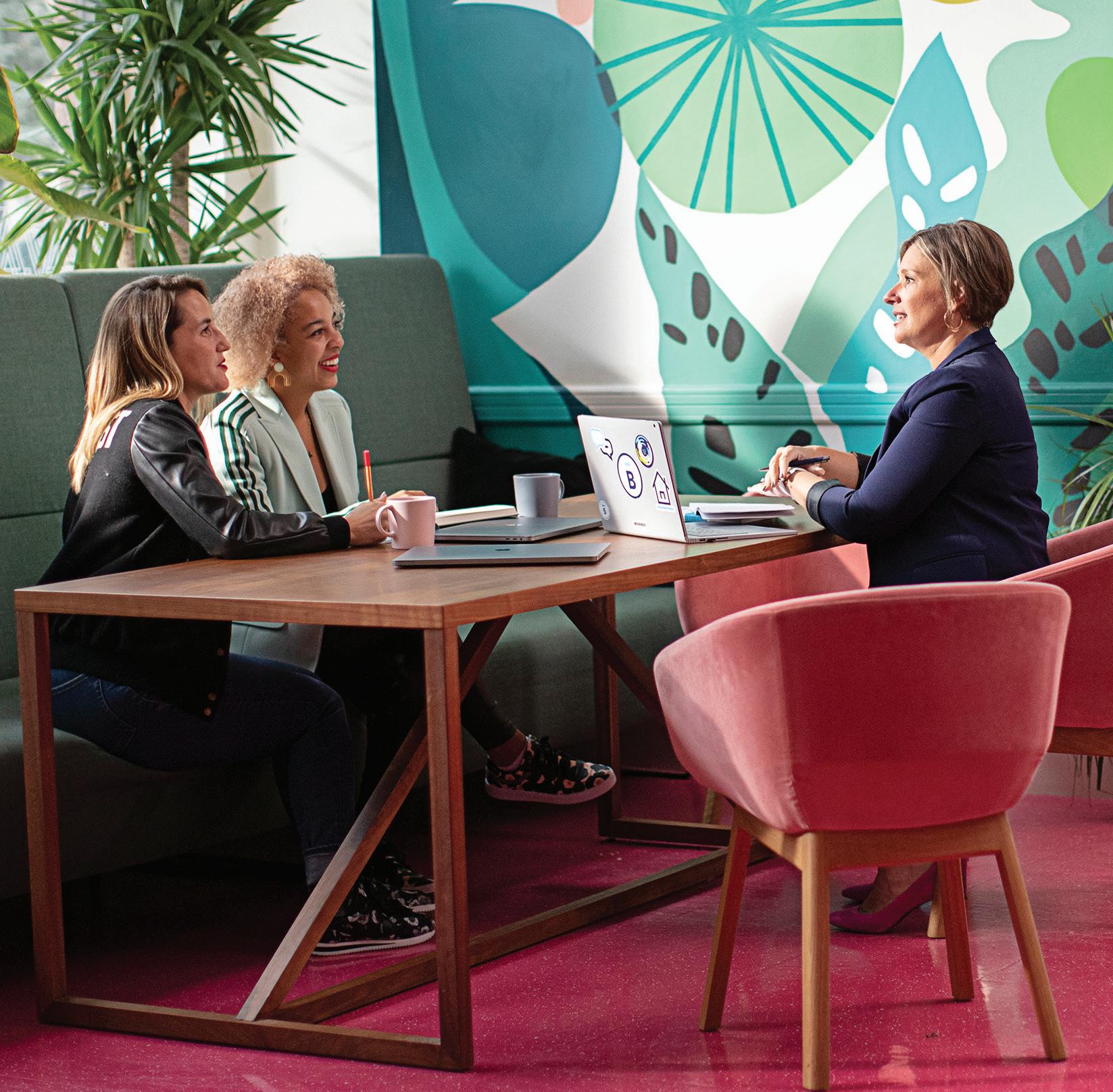
Let’s talk about your next one.
Success happens one step at a time.Dr. Verna Price Photos courtesy of Sheletta Brundidge New mentors were encouraged to “speak with authority.”
“So many times the narrative in the community is that people don’t care. We defy that narrative.”
Rondo
downtown. Similar caps exist in downtown Seattle over Inter state 5, in downtown Boston, and in a former Army base in San Francisco a mile from the Golden Gate Bridge. And, com munities elsewhere in the Unit ed States, such as the Bronx, Austin, Houston, and El Paso, are looking to do the same to their freeways.
Since the idea emerged, Reconnect Rondo worked with the community to understand how best to implement this idea, while also conducting studies to understand how the community was harmed so they can understand what the community needs. A “prosper ity study” they commissioned found the neighborhood’s Black population decreased after the freeway’s construc tion and their finances were set back drastically, to the tune of $157 million by 2018.
“Wealth is important [to the Black community] because of education, ability to pay for college,” says Josh Kohnstamm, who volunteers public relations
PillaRs
services for Reconnect Rondo and pointed out that many Rondo residents had to defer or even cancel plans for college because they lost their invest ments.
Planning a land bridge takes a lot of work, which involves studying its impacts on the environment, ensuring existing residents don’t get displaced, and determining how it will be owned and operated once it is constructed. To take on all that work, Reconnect Rondo plans to contract with Black profes sionals in fields where they are underrepresented, which include transportation and environmental planners, archi tects, and engineers who have the ability to connect with a community historically exclud ed from the planning process.
One of those tasked with laying out the master plan is Craig Vaughn, a Black Rondo descendant who is a transpor tation planner. “I never would have dreamed that I’d have the opportunity to come back to my childhood neighborhood and provide this type of sup port, helping them shape their future vision, especially consid ering my expertise in this type of work,” says Vaughn.
Reconnect Rondo is getting
or plans to get financial support from different sources to pay for all of this work. The Min nesota Legislature appropri ated $6 million to Reconnect Rondo in 2020 to study the land bridge, which Republican legislators tried and failed to take away last year. They also received $5.2 million from the federal government last year to conduct environmental review and engage residents to under
buildings similar to this on the land bridge once it is complete.
Additionally, Reconnect Rondo plans to apply for $5.4 million to conduct an Environ mental Impact Statement, per haps with the City of St. Paul, through the federal Reconnect ing Communities grant made possible by the Infrastructure Investment and Jobs Act.
Some people are concerned about the impact the land
We can go down to Selby Ave nue. Same thing, development is happening where communi ties are fighting…to survive and afford,” says Baker. “It’s our intention to ensure a forcefield of protection.”
The City of St. Paul received $150,000 from the Met Coun cil last year to study anti-dis placement initiatives as part of the land bridge development, which include a “right-toreturn” framework, ensuring money generated on the land bridge is reinvested into the surrounding Rondo communi ty, and mitigating tax increases.
Meanwhile, in August the City of St. Paul announced plans to offer $100,000 for each Ron do descendant who wishes to buy a home near or in Rondo.
strokes and COPD.
Statewide, the Minnesota Pollution Control Agency says the transportation sector is the biggest cause of greenhouse gas emissions in the state. The EPA says 82% of emissions come from those who use freeways. The Massachusetts Department of Transportation, however, found that building a cap over a freeway in down town Boston reduced emis sions by 12%.
“Let’s think about things geographically,” says Baker. “Transportation is a contributor [to greenhouse gas emissions] statewide. But let’s do the anal ysis here in this geographic area. Is that the case? Do we know?
stand what should be on the land bridge.
And with help from Sen. Tina Smith, they also received $1.5 million from the federal govern ment to build a net zero-emis sions building with space for housing, office space for busi nesses, Reconnect Rondo, and other community-based orga nizations, as well as a commu nity learning center on vacant Xcel Energy land on Concordia Avenue. They hope to build
as Mother Atum. Is there a specific meaning behind both names?
and cultural approach, allowing many to move from the concept of race to culture.
The CWC’s classes and programs include prenatal care, life coaching, cultural re-engagement, cultural selfstudy, health hub, life navigation, and elder coaching. Azzahir’s treasured wisdom and knowledge of the Black ancestral connection are certain to make some want to reexamine their cultural roots from a more thoughtful and historical perspective.
She challenges us to go beyond the veil of conventional mis-education, which for years has taught us who we were not—as African descendants. Welcome to class with Mother Atum.
MSR: You are sometimes respectfully referred to as “elder” and other times
Rent
Continued
Mayor Melvin Carter’s office supported the rent stabilization proposal but assembled a rent stabilization stakeholder group of property owners, developers and rent ers in Feb. 2022 to suggest possible amendments.
Meghan Daly, advocacy manager of the Minnesota Youth Collective, feels ordi nance 22-37 strays from the compromises the stakeholder group reached. “We know this will have a disproportionate impact on the tenants who live in affordable housing, who are disproportionately low income, BIPOC, disabled families,” Daly said. “Our data shows [ordinance 22-37] will remove nearly 20,000 St. Paul renters from rent stabilization protections.”
Chief
Murphy joined in 2002 and is currently the assistant chief
Mother Atum: Know that I didn’t give myself either one of those titles and have never asked anyone to call me either. Part of the life experience is that you grow into your purpose and do the work that you are called to do, and along the way those titles were affectionately bestowed upon me because of the work I was called to do.
MSR: What is the inspiration behind the creation of the Cultural Wellness Center?
Mother Atum: What inspired me to create Cultural Wellness is there were no organizations or institu tions anywhere that I’ve traveled and known that solely existed to study Black culture, to name Black culture, and connect it to knowledge, our belief systems, to our survival, and to our capacity to be everywhere all over the world but at the same time be nowhere.
Also, in part, because I became aware of how our people were pass
Daly cited exceptions added by 22-37 to the original rule approved by voters, which allow landlords to increase rent more than 3% per year if the unit is considered afford able housing or was built with in the past 20 years.
“The problem that the retro active application is trying to solve as a policy standpoint is a bit unclear as those buildings have already been construct ed,” Daly said. “They aren’t going to be unbuilt, yet they have now been exempted from rent stabilization. They don’t have to comply with the ordinance.”
Some St. Paul residents have said that the passing of 22-37 is overriding what resi dents passed in the 2021 elec tion. Ward 2 Council Member Rebecca Noecker responded to these allegations in a Face book post.
“Some people have contact ed me saying that any change to the ordinance goes against the will of the voters, and I
of police, which involves over seeing police and civilian staff as well as volunteers. She has no complaints.
The fifth candidate, Dr. Jac queline Bailey-Davis, works at the Philadelphia Police Depart ment as a police staff inspector
bridge would have on the com munity. One is gentrification and displacement, which hap pened in communities such as Boston with caps built over freeways. Nonetheless, gen trification in Rondo is already happening, with or without the land bridge.
“Speculation based on the Central Light Rail corridor [University Avenue], that’s a geographic area right now that people cannot afford to live in.
ing down a pattern of self-destruction.
I did not want to pass this down to my three sons, Anthony, Robert and Nev in. I didn’t want them to learn self-hate from me, but instead to learn cultural pride and honor—as I want for all of my people.
Perhaps the biggest sticking point with climate activists is that Reconnect Rondo is indif ferent about whether or not the freeway itself should remain, in spite of the health and envi ronmental impacts it causes communities along the route. Their commissioned prosperity study found the Rondo com munity is among the worst 5% of neighborhoods in the United States when it comes to traffic volumes, and the community suffers high rates of asthma,
ment? Who were we? Where did we come from? What was our belief?
Everything I learn I make a point to share with our people. That is the primary way in which we teach—we share and obtain knowledge during the process of teaching.
“Why [the freeway] should stay is not a determination that we make. That’s a part of MnDOT’s process.”
If they are able to secure their approvals and more fund ing, they hope to begin con struction around the same time the Minnesota Department of Transportation breaks ground on whatever plans they will develop for I-94, sometime in 2026 or 2027.
Henry Pan welcomes reader responses to hpan@spokesmanrecorder.com.
MSR: What is a core principle of cultural wellness that everyone should know?
MSR: Does reconnecting our people with their true heritage require a different type of teaching?
Mother Atum: Sharing our stories is how we should teach. We should teach as far back as possible. Only by knowing our true origin can we hope to know who we truly are. We all know things like slavery happened, but most of us do not know what existed before enslavement.
What happened before enslave
understand that perspective,” Noecker wrote. “Since the ordinance passed last fall, I have been clear that I take the will of the voters seriously.
“I was not willing to consider changing the policy from what voters approved until it had taken effect and unless there was evidence that the ordi nance was putting critical com munity needs at risk,” the post continued. “Unfortunately, it
MSR: What does cultural wellness teach us about ancestral relevance?
Mother Atum: Our ancestors, those who have gone before us and those who will come after us, both are con nected to us who live in the present. Our ancestors are very important to us. We start with God as a higher power— invisible, yet present. That amazing power exists in our past, present, and conceivably in the future.
protections from renters.
“The most glaring [issue] to me continues to be the complete removal of rent sta bilization protections for basi cally all types of affordable subsidized housing through out Saint Paul, from properties accepting Section 8 voucher holders to properties funded by the federal Low Income Housing Tax Credit,” Jalali wrote.
Mother Atum: There are many. We teach there is never any judgment of the actions of those subjected to their pain and suffering. For example, our people who jumped to their deaths from the slave ships—are they any less heroic than the ones who died at the hands of the oppressor after reaching the shores of the Americas or those who survived and produced a lineage that survives to this day? We learn from them all—the living and the dead. Also, we don’t see death as the end. We see it as an extension of the beginning. Cultural wellness starts with the African for me. Our center is about Africanism and bringing back our humaneness and then teaching it to the world.
MSR: Can Whites learn through cultural wellness?
Mother Atum: We have to under stand that Whites have also been
Juan Luis Rivera-Reyes, a coalition organizer with The Alliance, called the overall situation with 193A a “net positive” but took issue with the exemptions for rental cap increases created by 22-37.
“It’s still going to protect renters, but instead of going in a direction where it was going to expand even more protec tion for renters, it’s gone in a direction where it’s excluding some of the most vital rent ers within St. Paul in the sense that affordable housing rent ers are now being excluded,” Rivera-Reyes said.
has become apparent that one of our most important com munity needs—building more housing—may be impacted by the policy as written.”
Ward 4 Council Member Jalali was one of just two council members to vote against 22-37. In a Facebook post Jalali said 22-37, as it was written, stripped too many
in the Standards and Account ability Division and Audits, which evaluates police mis conduct against department policies and procedures among some of its tasks.
She also appeared to lead efforts to respond to the Depart
“In my ward, this includes major properties with hun dreds of constituents living in buildings along the Green Line—residents who are over whelmingly people of color and low-income renters. To put it very simply, I will not vote to take rent stabilization away from my constituents who need it the most.”
ment of Justice’s allegations against the police department around using force. Representa tives from the city of Philadelphia did not respond to requests for comment by press time.
Members of the public had an opportunity to meet the
“It’s going to lead to more people being housed, more people being able to stay in their homes, more people not being displaced due to egre gious rent increases—those are real increases we can call a victory, but I do need to emphasize the dialogue does need to continue.”
Rivera-Reyes noted that Dominium, an affordable hous ing developer, was raising rents
candidates on October 11 and October 12. Go to the city’s Facebook page to watch the livesteams.
Meanwhile, the Metro politan Council began solicit ing applications for the chief of Metro Transit Police after
7.9% in St. Paul this year, which is the maximum raise a land lord can self-certify as neces sary without a City inspection under 193A. Meanwhile, it was raising rents 12.5% in parts of the Twin Cities metro that lacked rent stabilization laws. Dominium did not respond to a request for verification.
Rivera-Reyes and Daly were optimistic about changes to rent stabilization, both noting that any law can be rewritten in the future.
“I think lots of people just learned what is possible when we work together and do some direct democracy,” Daly said, referring to the passing of the ballot measure that created 193A. “And I think all of that energy—it doesn’t go away. I think people are going to keep working to create the housing stability that St. Paul renters deserve.”
Cole Miska welcomes reader responses to cmiska@ spokesman-recorder.com.

its chief, Eddie Frizell, left to become a U.S. Marshall for the District of Minnesota. Applica tions are due October 16.
Henry Pan welcomes reader responses to hpan@spokesmanrecorder.com.
“I never would have dreamed that I’d have the opportunity to come back to my childhood neighborhood and provide this type of support.”
“We have to understand that Whites have also been harmed by White supremacy, but no one tells them this.”
“I do need to emphasize that the dialogue does need to continue.”
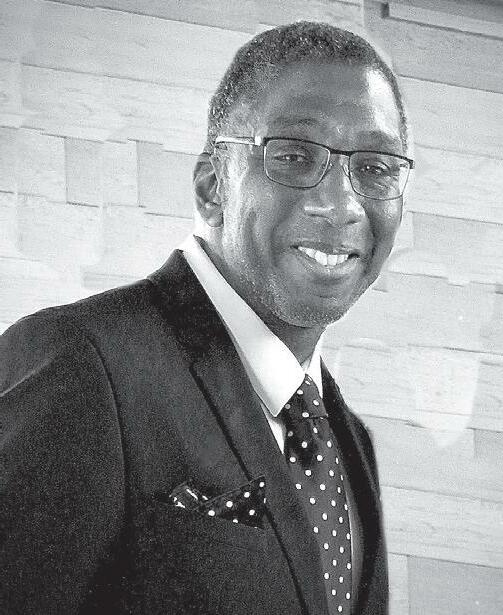 Contributor
Contributor
Sadly, many people suffer from back pain. Three quar ters of all Americans will expe rience back pain at some time in their lives
The pain can be everything from a dull ache, stabbing pain, shooting pain, burning, or a combination of all these symptoms. Regardless of the exact symptoms, back pain can be so debilitating that an individual cannot stand, walk or function.
The location of the pain can occur in the middle of the back, lower back, or even the back of the neck. Back pain can also be sudden in onset, known as acute (a few days or weeks in duration), or long standing, known as chronic (defined here as more than 12 weeks of symptoms).
Symptoms may originate in the back, but may radiate to the hands, arms or legs. Be sides pain, neurologic symp toms such as numbness and weakness may also occur.
Most back pain originates within the lower back or what’s known as the lumbar region. This space contains five bones, known as verte
The recovery from debilitating back pathology can be complicated and long.
brae, which provide support to the weight of the upper body. These bones are cush ioned by cartilage-like struc tures known as vertebral discs.
Some nerve roots for motor function and sensation also exit from the spinal cord in between the bony vertebrae. Ligaments, tendons and spinal muscles stabilize the entire vertebral structure.
Similar structure is within higher areas in the back, or
thoracic spine region, as well as the neck and cervical spine. Any of these compo nents can become damaged, which may lead to pain and loss of function. There is no one solution for providing pain relief, since the causes of back pain vary.
Causes of back pain
Causes may include injury to the following structures:
• Ligaments and muscles
• Intervertebral discs (cush ions between the vertebrae)
• Nerves
• Vertebral bodies or verte brae aka the bony structures that make up the spine
• Other organs, causing re ferred pain from organs like the kidneys with renal stones
Degenerative issues



• Vertebral disc degeneration
• Arthritis
• Vertebral joint disc lead ing to bone wear and tear (aka spondylosis)
Nerve injuries (not due to trauma)
• Narrowing of spinal col umn
• Infections
• Nerve compressions
Non-spine causes
• Kidney stones
• Tumors
• Pregnancy
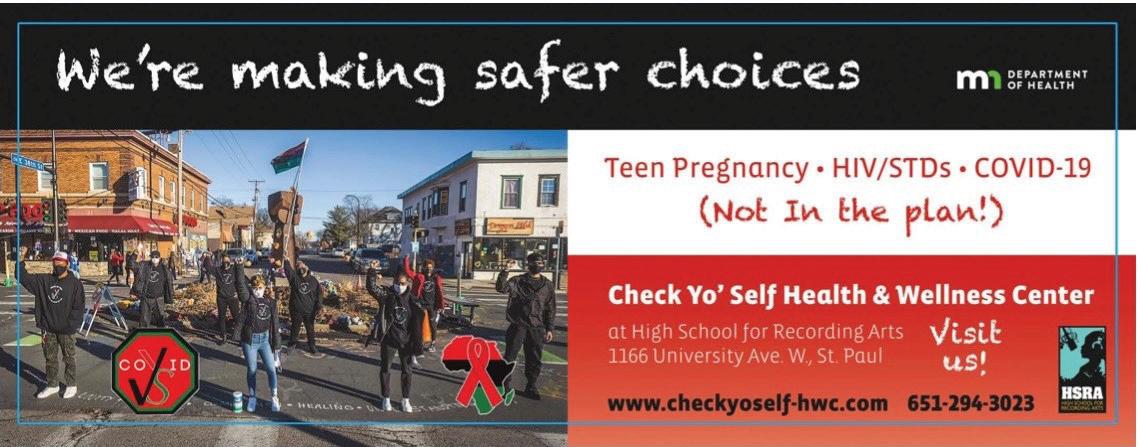
• Chronic pain conditions
Treatment (some are ad vanced therapies
• Medications for acute or chronic pain; anti-inflammato ries; topicals
• A note about topi cals: Many contain Ibuprofen (Motrin) or Lidocaine. It is im portant to note what is con tained within theses topicals, since too frequent application may lead to toxicity.
• Self management: com presses, exercise, massage

• Physical therapy
Health
• Acupuncture
• Spine manipulation and mobilization
• Spinal injections
• Surgeries, of which there are many
• Implanted nerve stimulators
Enhanced therapies
Enhanced therapies are usually guided by medical evaluation that will include an examination as well as di agnostic studies. Some of the studies to guide enhanced therapies include:
• X-rays
• CT scan
• MRI
• Nerve conduction studies
• Nerve blocks
Therapy considerations
• Steroid or local anesthetic injection: technical procedure that requires a specialist
• Opioids: addiction potential
• Muscle relaxants: can have side effects such as drowsiness
• Antidepressants: takes mul tiple doses and time to work
• Surgery: surgical compli cations and failed procedure
• Biofeedback: difficult to master for some people
Seek medical help when there is:
• Persistent or worsening back pain

• Neurologic symptoms such as numbness, weakness or tingling
• Changes in bowel or blad der function
Surgery
Usually recommended when medications and therapy have failed and the patient’s loss of function is persistent. Also sometimes required if nerve compression is severe or a fracture has oc curred and is damaging struc tures.
Surgery may fail 20-40% of the time, may take a long time to recover from, and may not fully resolve the symp
pending on the cause of their pain or loss of function.3
Outlook
The recovery from debili tating back pathology can be complicated and long. Some thing within an individual’s control is strengthening ex ercises to improve muscular spine stability. These activities also strengthen the ligaments and tendons that provide sup port to the spine.
A positive outlook com bined with seeking help early on is essential for improve ment. Lifestyle changes may also be required to improve outcomes. These include al

tering job-related factors, physical fitness, and optimiz ing mental health.
Sean J. Ennevor, M.D. graduat ed with a B.A.S. in biology and economics from Stanford Uni versity, and as a Dean’s Scholar from UCLA School of Medicine where he received his MD. He completed his medical residen cy and fellowship in anesthesi ology at Yale University, where he was chief resident and on staff. He practiced medicine in the Twin Cities for over 14 years, and presently serves as an ad visor and investor for medical technology companies through out the country.
toms. One has to be realistic with their outcome goals deBy Charles Hallman Contributing Writer




“Don’t Block Your Blessings,” a short film by Darius Aubry, is about an elderly Black woman with Alzheimer’s who wan dered off from her family and is later discovered by a pass ing motorist en route to his job. He stayed with her until her family arrived and was un expectedly rewarded for his good deed.
Aubry, a writer/director/ producer from Oakland, Ca lif., submitted his short to this year’s Twin Cities Black Film Festival (TCBFF) and was present as his film was shown during the four-day event last month. “I’m glad that we picked the film,” said TCBFF Founder-Director Natalie Morrow during a
post-film Q&A. “Blessings” stars Jordan Rielly, who formerly lived in Minneapolis, and Tonie Bisby Griffith. The film’s climax tugs on the viewer’s emotional heartstring.
“I stepped up and spoke with her,” he continued, “and everything just kind of unfold ed that way.”
Rielly via FaceTime also spoke to the audience, where his mother was in attendance:
“I wrote the film,” noted Au bry. “It was based on an event that happened. I’m the person that actually pulled over. I was driving down the street [and the] woman was sitting there [on the curb]. Something just spoke to me and told me to pull over.
“I was crying the whole time I was watching the movie,” said the actor. “I want to say thank you to Darius to allow me to be a part of this project. You have such a big heart.
“I wasn’t there in person but I’m there in spirit,” said Rielly.
Afterwards, Aubry spoke
to the MSR. He started his Oakland Films, a full-service production company, in 2021.
“Blessings’’ is the first produc tion out of his company.

“It was just an amazing project,” said Aubry. “The way that everything came together was such a beautiful experi ence, and right in the middle of the pandemic. We had zero in-person rehearsals” and had to resort to conducting them on Zoom,” he pointed out. “We shot in three days.”
The filmmaker said he got the film bug back in the 1990s.
“When I was younger,” said Aubry, “I had no real interest or never thought about film making as a career because I grew up in Oakland. Growing up, there were no filmmakers in Oakland that I knew of, so I never thought about it as an occupation.”
As a result, Aubry became a tradesman, but all that changed when he moved to Los Angeles
and got reacquainted with an old friend named F. Gary Gray. “We hung out together in our late teens. So, once he started making films, I worked with him for a while.” He worked with Gray as a personal assis tant on “The Negotiator” with Samuel L. Jackson and Kevin Spacey.
From then on, Aubry said, he did whatever he could to “absorb as much as you can about filmmaking. I would do whatever I had to do, work on the weekends, work for free, and just learn, learn and learn.”
Among his experience gained over the years, Au bry worked as a PA (produc tion assistant) on other films, worked as an assistant stage manager on BET’s “L.A. Live,” as a PA on the movie “Baby Boy,” and directed several music videos, later taking film making classes at Santa Moni ca College (2017-19).
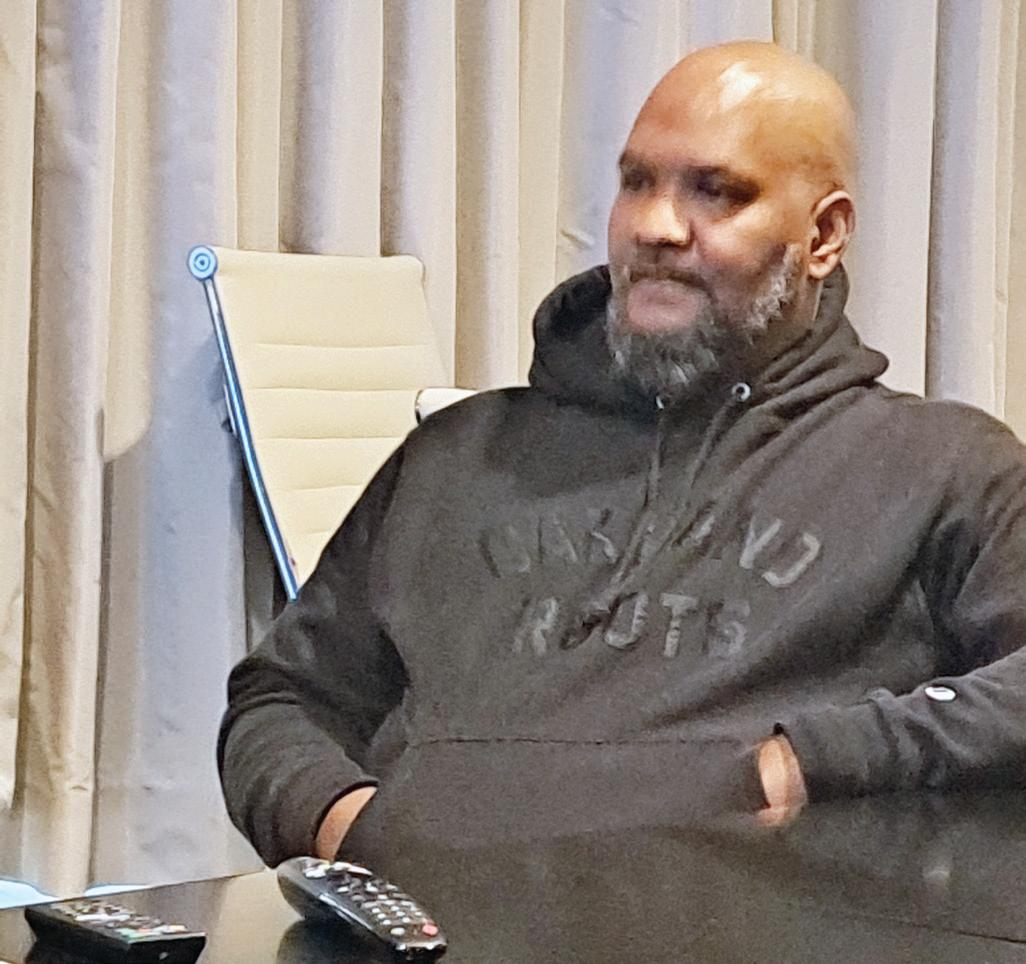
His next project, Aubry said, is also based on a real life event. “I wrote a film about an incident that happened in Los Angeles probably about eight years ago,” he said of an inci dent involving the police and witnessed by a young child who was home from school that day.
For more information on “Don’t Block Your Blessings,” go to www.oaklandfilms.com/dont-block-your-blessings.
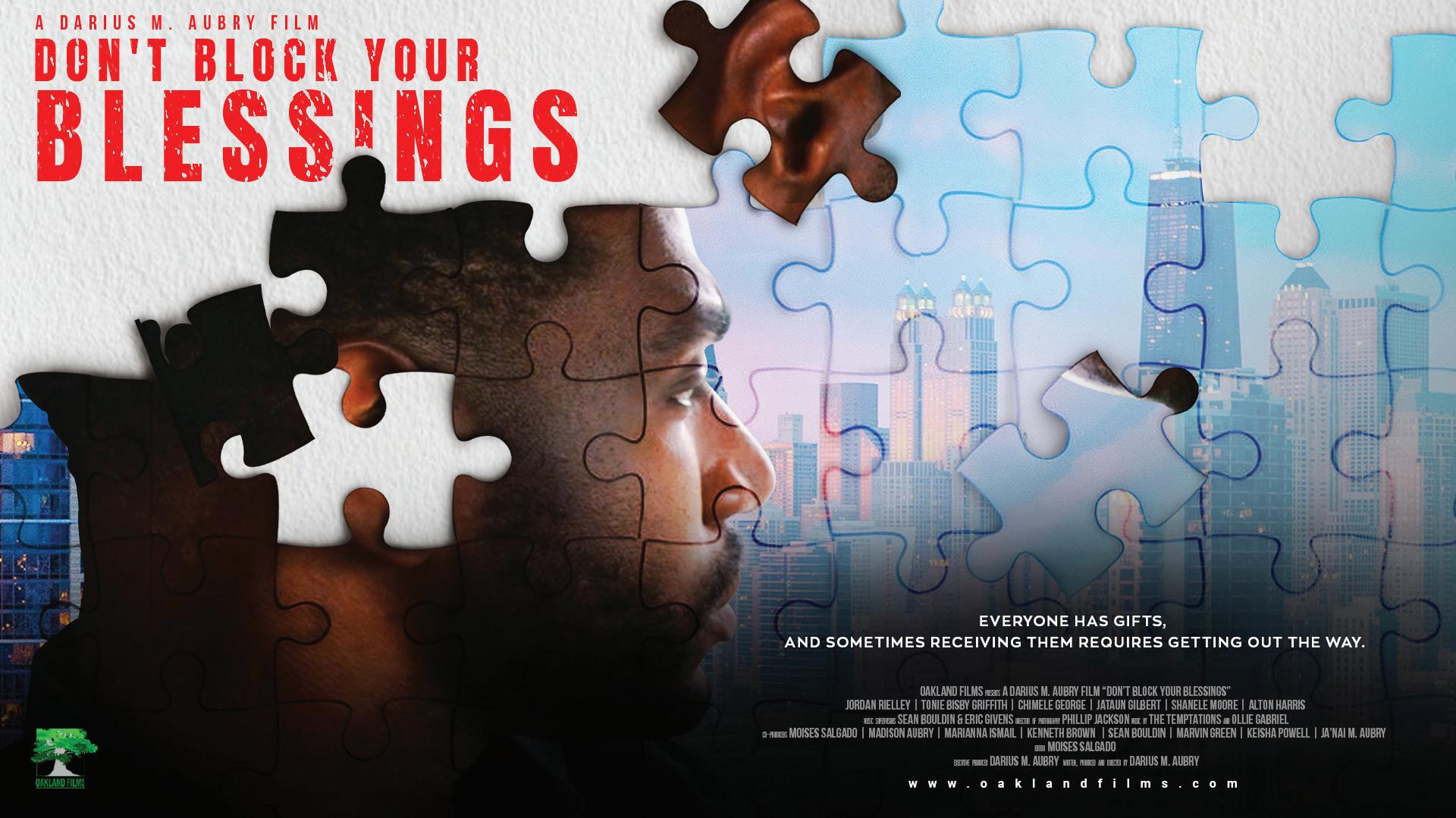

 by SUZAN-LORI PARKS directed by STEVE H. BROADNAX III
by SUZAN-LORI PARKS directed by STEVE H. BROADNAX III

The way that everything came together was such a beautiful experience, and right in the middle of the pandemic.Charles Hallman welcomes reader responses to challman@ spokesman-recorder.com. Darius Aubry Photo by Charles Hallman
Arts & Culture
Drumline and dance team recognized as lights in the community
By Cole Miska Contributing WriterHue-MAN Partnership and Hawthorne Neighbor hood Association presented awards to members of the TKO Drumline and Knock out Dance Team on Thursday night at the Zanewood Recre ation Center.
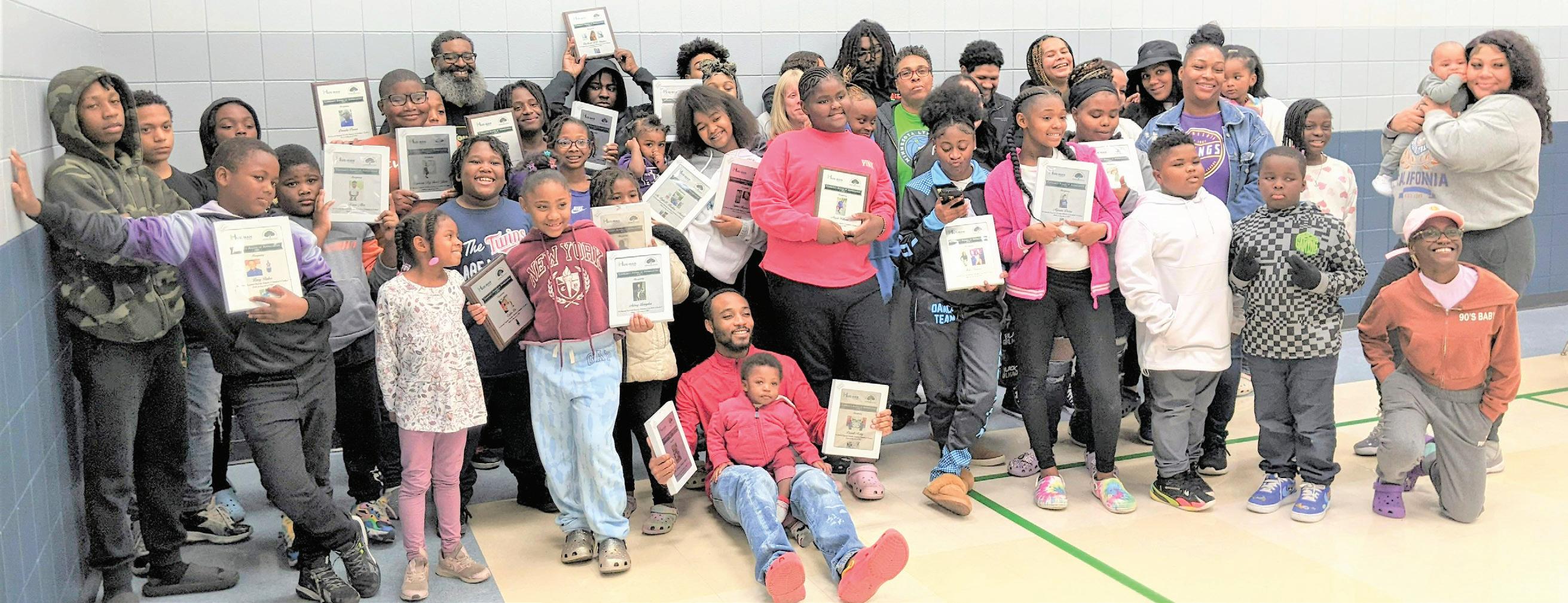
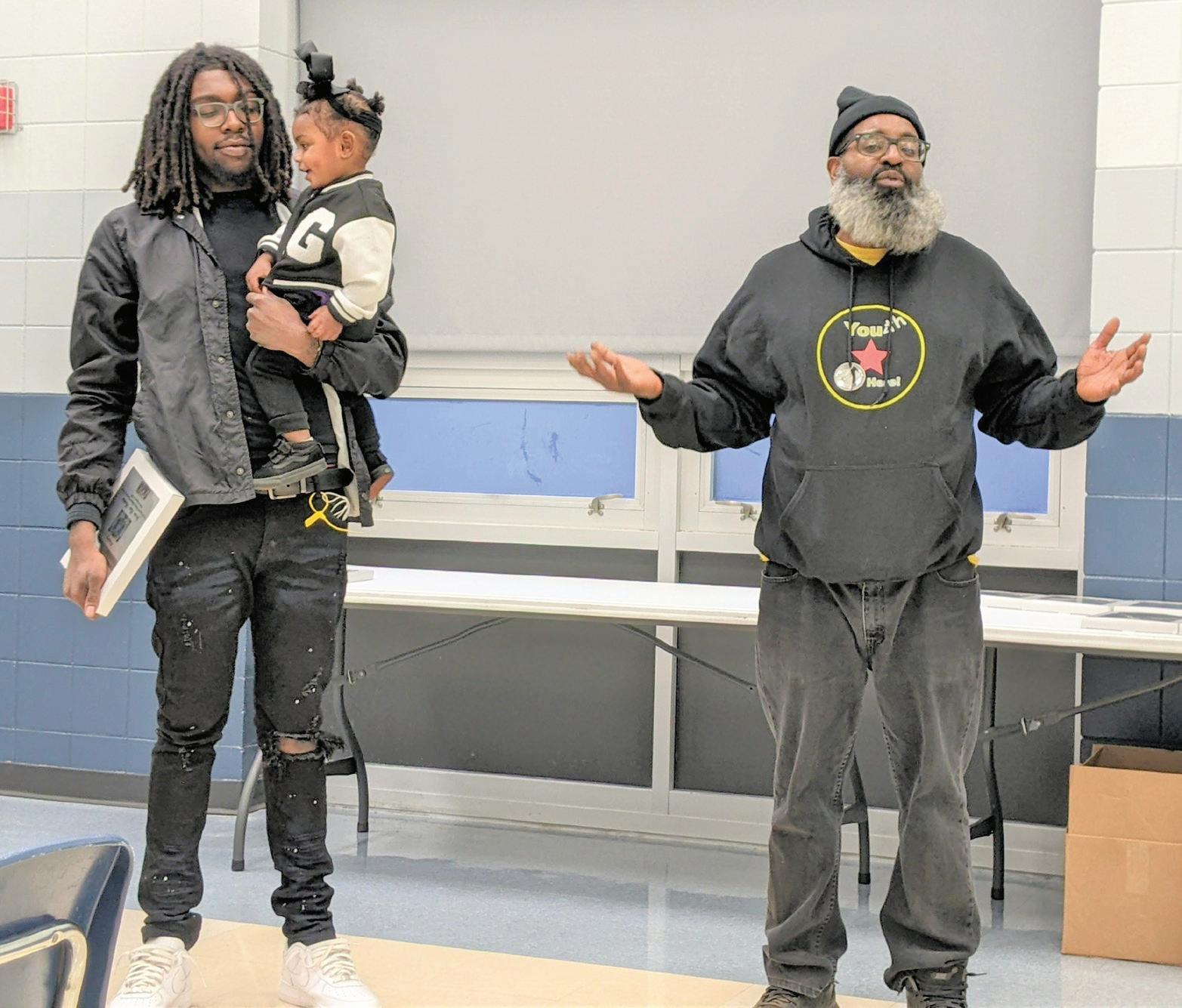
Clarence Jones, outreach director of Hue-MAN, said they decided to do the award ceremony with the neighbor hood to build stronger com munities. “We feel like it’s important to encourage [the kids], and as adults we have the responsibility that when they do positive things, we want to engage them,” Jones said. “We also like to recog nize people in our community that are doing well.”
TKO travels to participate in competitions, having won several awards as a team in the past. Last month, TKO traveled to the Wisconsin Dells to participate in the WoZha-Wa Days parade.
More than 20 plaques were given out to the team’s drum mers, dancers, and parents who help with the program. Plaques were presented by Jones, drumline coach Byron Hawkins, and Diana Hawkins, Byron’s mother and TKO’s business manager.
Byron said he started work ing with TKO in 2011 when his eldest son Ja’Ron RossHawkins, nine years old at the time, came home from school and told Byron he had joined
the drumline.
“I was like, ‘What? You’re not even into drums like that,’” Byron recalled. “I bought him a drum when he was little;
When Turner moved out of the state in 2016, he asked Byron if he would take over the group. Byron has been the head of TKO ever since and coaches the drumline portion of the group, with all five of his children in the group.
said. “The kids, ages 18 to 21, they’re the people that I lean on to help be the leaders, the ‘junior mes’ as I put it.
“I know I can’t be in all plac
her own dance team before moving to TKO last year. She said that she has already seen growth in her team, both in dance talent and in leadership
mances from scratch without guidance from the adults.
“Our girls make up dances, we talk about it, we go home and pick a song, we practice
he was trying it out but really wasn’t into it.”
Byron went to Ja’Ron’s school and met Arthur Turner, the founder of TKO. Turner told Byron he could use help running the group, and Byron became assistant director of TKO.
Boys and girls are accepted on both the dance team and drumline. Byron said he had multiple boys on the dance team last season, and that his youngest girl drummer was only seven years old. The group originally accepted kids eight and older, but Byron reduced the cutoff to five and older. When TKO mem bers turn 18, they help teach younger kids.
“When you turn 18 you become an assistant leader. That is more of you becom ing a junior instructor,” Byron
Small Business Dos & Don’ts

es at all times—they’re always there to help me out. And [the team’s] wonderful parents. This is probably the best sup port system I’ve had since we started, and it’s showing.”
Byron has all TKO mem bers go through a technique class where they learn how to hold sticks and play sim ple rudiments and patterns. Younger kids are given sticks and play along with older kids until they start to de velop a rhythm.
“Once they start to feel the rhythm, learn the rhythm, they automatically play it without us even having to teach them,” Byron said. “Once they’re eager to do that, then they’ll start to learn because they want to know how to play those certain beats that the older kids are playing.”
Taylor Britt coaches the dance side of TKO. Britt had
skills. Britt noted that she has seen many of her pupils get over their fear of performing in front of other people, and that they have gained confi dence in general.
“They all have come out shining,” Britt said.
Diana has seven grandchil dren in TKO. She does the booking of performances and bookkeeping because she be lieves the group is a good way to keep kids on the right track.
“I just want to make sure that all our youth stay away from drugs, and make sure [they] get a mentor, big broth er or big sister, stay in school, and get a good education,” Di ana said.
Anaya Nelson, also known as “Dots” within the group, is one of the dance team’s lead ers. Nelson said that both the dance team and drumline team create their own perfor
and record and send it to the group chat,” Nelson said.
“Sometimes we dance with the drums, sometimes we dance majorette songs, hip hop songs, slow songs, it just de pends on the genre of dance that we’re doing.”
Symone Hawkins, 12, is on the dance team with Nelson and said TKO has helped her learn “rhythm, discipline and teamwork.” Her favorite part of TKO is getting to dance with the friends she met through the program.
View performances by TKO on their Facebook page: www. facebook.com/tkodrumline. Learn more about the HueMAN Partnership at hueman partnership.org
Cole Miska welcomes reader responses to cmiska@spokes man-recorder.com.


President, Vice President, Treasurer, and Secretary effective immediately.
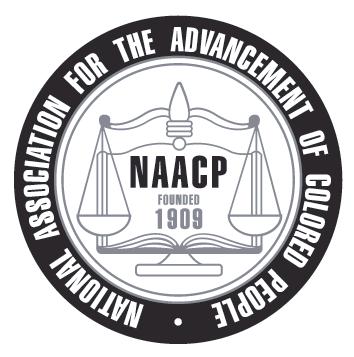
They all have come out shining.TKO Drumline and Knockout Dance Team Photos by Cole Miska (l-r) Ja’Ron Ross-Hawkins with sister Layla Hawkins, and Byron Hawkins


MN groups brainstorm ways to address poverty disparities
By Mike MoenOn the heels of a regional conference, multiple groups are working on new solutions for reducing the poverty gap in Minnesota.
Nonprofits, government leaders and people who’ve seen poverty firsthand gath ered last week in Duluth to get a deeper sense of the con nection between poverty and race in Minnesota, and dis cuss how to overcome longstanding disparities.

Bill Grant, executive direc tor of the Minnesota Commu nity Action Partnership, which hosted the event, said one observation is assistance pro grams are often run by people who have never experienced poverty. He added public per ception is still a problem.
“We also need to challenge the belief that poverty is ines capable,” Grant asserted. “We need to get over the belief
ElEctions
Continued from page 1
Among the threats
The hearing came as states are preparing for the November midterm elec tion, which many election officials fear could prompt another surge in threats and harassment. A recent national survey found that one in five election officials say they are somewhat or very unlikely to stay in their jobs through 2024 due to the increased threats and political pressure. Among the threats:
• New Mexico county clerk Amanda Lopez Askin reported several death threats.
• In Washoe County, Nevada, election workers have been followed to their cars and threatened.
• In Gillespie County, Tex as, the election admin istrator and the entire staff resigned in August because of threats and harassment.
• A Nebraska man pleaded guilty to making mul tiple threatening posts on Instagram, targeting an election official, with posts saying “Do you feel safe? You shouldn’t. Do you think Soros will/can protect you?” and “Your security detail is far too thin and incompetent to protect you. This world is unpredictable these days….anything can hap pen to anyone.”
• In Colorado, a man called Secretary of State Jena Griswold and told her that “the angel of death is coming for her.”

• Ken Matta, who worked in the Arizona Secretary of State’s office for 19 years, quit after threats from “people out front with full autos and assault rifles” who were “looking in our cars…seeing who’s going in and who’s going out.”
that there will always be a per centage of the population that chooses to live in poverty.”
While overall poverty has declined in the U.S., a recent Partnership report noted the Minnesota rates for Black resi dents and Native American pop ulations are 20% or higher, well above the state level of 8.7%.
Grant noted one solution discussed was pardon reform, in hopes of making it easier for someone with a past convic tion to escape the poverty cy cle with a new job and housing.
John Doan, vice president of operations and equity for Trellis, a group providing sup port services for people as they age, said income dispari ties are especially felt among older Minnesotans of color.
He stressed it is a myth programs like Social Secu rity and Medicare give seniors everything they need, and depending on your ZIP code, your advanced years are likely
and other experienced and committed election officials leave. “A lot of the people coming in to take those empty spots are going to be election deniers or con spiracy theorists. We have a lot of concerns about their entry into the process. This is really important: In the elections community, I can still say everybody is on board with the rules-based integrity of their jobs and the importance of elections. I can say I’d still trust my vote to any of these people.
That will not continue to be true, starting in 2022 and definitely in 2024. It’s just impossible for that to remain true nationally.“
to be even more difficult.
“Access to education, access to healthy food sources, ac cess to jobs; all of those things play into account,” Doan out lined. “Because if you think
and some, such as personal information about election judges or source code for voting machines, protected by law from disclosure.
In Dane County, Wis consin, County Clerk Scott McDonell said he had received more than 50 detailed and lengthy information requests in a two-day period. The New York Times reported on the Election Integrity Network’s activities before the 2021 Virginia gubernatorial elec tion:
“In Fairfax, a Democratic bastion outside Washing ton, about three dozen activists associated with the coalition and the local
about [being] older and poor, it’s an accumulation of lots of years of life experience and of life circumstances.” Doan’s group is part of a coalition that will soon ask state lawmakers
blocked a Republican effort to change Arizona law to allow the legislature to over ride the popular vote and pick its own winner in future presidential elections. He faced down pistol-wielding protesters outside his Ari zona home.
Bowers testified before the House January 6 com mittee and then lost a primary challenge to an election denier. In a recent
to boost funding for basic ser vices for older Minnesotans, to make sure economic pros perity is evenly shared.

“For example, we know that there’s a huge shortage in
interview with The Guard ian, he warned:
“The constitution is hang ing by a thread. The funny thing is, I always thought it would be the other guys.
And it’s my side. That just rips at my heart: that we would be the people who would surrender the con stitution in order to win an election. That just blows my mind…
“The veneer of civilization
is this thin. It still exists—I haven’t been hanged yet. But holy moly, this is just crazy. The place has lost its mind.”
Next week: Part IV concludes MSR’s Elections Under Attack series: Attacking voting rights.
Mary Turck welcomes reader responses to mturck@ spokesman-recorder.com.

Information requests
Besides these overt threats to the lives and personal safety of elec tion workers, attacks on the electoral process fea ture a flood of information requests designed to over whelm election workers rather than to gather actual information. Well-funded right-wing organizations partnering in the Election Integrity Network demand voting records from 2020, as well as voter lists, per sonal information on elec tion judges, voting machine records, and more. Kim Crockett, the Republican candidate for Minnesota Secretary of State, is affili ated with the Election Integ rity Network.
These organizations post cut-and-paste templates so that followers can file multiple requests for infor mation—some legitimate
Republican Party rotated through election offices, combing through voter registration applications, undeliverable mail and other materials. Christine Brim, the task force’s lead er, appeared in person or emailed staff nearly every day, according to Scott Konopasek, the registrar at the time. The operation ate up county workers’ time with dozens of information requests, as well as informal interrogations, Mr. Kono pasek said.”
The assault on the elec tion continued on election day, with election workers reporting that Republican poll watchers in 13 poll ing places were disruptive, standing too close to voters or taking photographs.
The price of dissent
Arizona’s Speaker of the House, 69-year-old lifelong Republican Rusty Bowers,
There is nowhere I feel safe. Do you know how it feels to have the president of the United States target you?
Minnesota rates for Black residents and Native American populations are 20% or higher, well above the state level of 8.7%.
Why Black people avoid Covid vaccinations
By Dr. Joan PrinceWhen America gets a cold, the Black community gets pneu monia. This saying is well known to many who pay attention to topics of health care and health equity in this health-compro mised and vulnerable population in America.
Open Letter to President Joe Biden
By Wayfounder FoundationWe write to you today as a Coalition of Black and Brown women and mothers who have seen and experienced firsthand the devastating impacts of the War on Drugs on our commu nities and the collateral conse quences experienced by those with low-level drug convictions.
For many years incarcerated people, their family members, activists and organizers have called on people with power to use some of their authority to end the War on Drugs.
“It is in light of these cries that we applaud and welcome your announcement [last week] that you are pardoning individuals who were convicted at the fed eral level for simple marijuana possession. We also appreciate that you called attention to the collateral consequences that of ten accompany drug convictions, and the draconian laws that con tinue to unnecessarily classify cannabis as a Schedule 1 Drug.”
-Nekima Levy Armstrong, civil rights attorney and executive direc tor of the Wayfinder Foundation
“Even though I became the ‘Poster Child’ for federal drug sen tencing gone wrong in the 1990s, and was granted executive clem ency by President Clinton in De cember 2000, there are still many other incarcerated women of col or, like my friend Michelle West, who are waiting on their opportu nity to live lives that would over shadow who they used to be, if given the opportunity. Clemency is her only hope.”
-Kemba Smith, former drug war prisoner and author of “Post er Child: The Kemba Smith Story”
“Your decisions represent a necessary—and long overdue— change that will affect thousands of people who were convicted under federal drug laws (and rules governing the District of
Columbia). “However, as one of the architects of the 1996 Crime Bill, you are likely aware that there are millions more people who are trapped under the crushing weight of other federal and state laws that use drugs as an excuse to criminalize poverty and mental health.”
-Chauntyll Allen, director of Criminal Justice Policy and Activ ism, Wayfinder Foundation
edgment of the harms that have been caused.
Formerly incarcerated people are routinely denied access to jobs that pay a living wage, while unjust laws make it harder for families of incarcerated people to live in pub lic or subsidized housing.
Yes, there have been colds, there has been pneumonia, and now there is Covid-19. Once again, those who can least ac commodate another health epidemic are the most adversely affected. As a national advocate for equity and a research consul tant for the national “We Can Do This” Covid-19 vaccination campaign, these are not just my musings. Look at the data.
(CDC) Data Tracker, as of Sep tember 14, 2022, 43.3% of the Black population was fully vacci nated. This uptake is the lowest among all races/ethnicities.
CDC’s weekly tracker on vac cine demographics also shows only 46.2% of Black Americans ages five years and older who are eligible for a booster dose have received one booster as of September 14, 2022, compared to 59.8% of White Americans ages five and older who are eli gible for a booster.
this issue. The use of culturally linked partnerships with known entities (e.g., Black sororities, fraternities, social and fraternal organizations), culturally target ed media programming where trusted messengers reflect the community of interest, and culturally targeted community outreach (activities in the com munity during community meet ing times) rose to a priority level after the community was inter viewed regarding their thoughts on the vaccines.

We demand sweeping changes, not just in regard to federal mari juana convictions, but to the entire set of laws that comprise the War on Drugs and that have led to mass incarceration in the United States.
Further, the federal govern ment should pay reparations to the people and families affected by the War on Drugs. According to the ACLU, Black women are more than three times as likely as White women to be incarcer ated, and Latinas are 69% more likely to be incarcerated than White women. A disproportion ate number of these women are low-income and mothers of chil dren under age 18.
When mothers are incarcerat ed, their families don’t just lose a primary caretaker, but also a pri mary wage earner. The effects of low-income women’s imprison ment exacerbate the economic inequalities that affect histori cally marginalized families and communities, while compound ing economic consequences for generations to come.
Low-income Black and Brown women have also suf fered turmoil from the loss of their parental rights due to mari juana possession and drug con victions. We demand a plan for the restoration and reunification of children and families caught in the drug war and an acknowl
Young people with drug con victions have lost access to fed eral Pell Grants, which remains one of our society’s primary mechanisms for upward eco nomic mobility for low-income students. None of the wealth stolen due to the drug war and mass incarceration has been re turned to the people, and we will not stop fighting until it is.
We agree with your call to ac tion to other leaders, including governors, to make changes at the state level to address the im pacts of marijuana convictions for simple possession. However, we ask that you take things further by pushing for the repealing and dis mantling of all the legislation that holds up the house of cards that comprises the War on Drugs.

We note, especially, the Con gressional Black Caucus, which should play a stronger leadership role in unwinding the implicated federal policies, including manda tory minimums and the sentenc ing guidelines in drug cases, the egregious statutory differentials in sentencing for crack cocaine versus powder cocaine, the loss of discretion of federal sentenc ing judges, as well as draconian drug conspiracy laws—which prosecutors use disproportion ately to punish low-income peo ple of color, often outside of the court’s purview.
State laws must change as well, as there are more than 12 times as many people incarcerated at the state or local level for drug offenses compared to the fed eral level. States should repeal the laws that have these disparate ef fects, while using the other tools at their disposal to alleviate ongo ing harm in the short term.
That should include issuing their own pardons, restoring felon voting rights, freeing drug prison ers, expunging criminal records of those affected, and decriminal izing marijuana, at the very least. The individuals who have faced unjust incarceration as a result of the drug war should also receive reparations as a result of the sig nificant and irreparable harms they have experienced.
Finally, states and the federal government must reinvest the funds being wasted on every as pect of the War on Drugs back into low-income communities of color. Black and Brown communities in particular require deeper invest ments in high quality employment opportunities, affordable housing and home ownership programs, youth programming, education, and youth entrepreneurship.
We also demand additional resources for re-entry services, so that people returning from jails and prisons are able to more successfully reintegrate back into society.
Thank you for taking important, yet long overdue action steps to wards decriminalizing marijuana.
the same time, we urge you to
According to the Centers for Disease Control and Preven tion (CDC), Black individuals are about twice as likely to be hospitalized or die from Co vid infections than their White counterparts. They also report that pregnant Black women are twice as likely to die than their White counterparts if the cause is the Covid-19 virus.
Studies are pending regard ing the effects of known variants of the virus on this same popula tion, but there is no evidence to date to suggest that the data will positively affect the current dis parate results.
However, Covid vaccination rates for the Black community still lag behind their White coun terparts on all levels (primary vaccine series and additional vaccine doses). Representing nearly 13% of the U.S. popula tion, the Black community is one of our country’s communities that was hit hardest by the Covid pandemic.
According to the Centers for Disease Control and Prevention
Research data, both primary and secondary, has disclosed several barriers viewed by the Black community as it relates to receiving the vaccine. Barri ers identified were a failure to believe messaging around the benefits of the vaccines due to a reliance on sources that were not research-documented, and a lack of trust in traditional provid ers and the current healthcare delivery system.
Barriers identified were a failure to believe messaging and a lack of trust in traditional providers and the current healthcare delivery system.
Simply providing the vaccine in community locations was not enough to drive individuals to the sites. Other strategies were nec essary to increase engagement and decision-making around the virus itself and ways to attack it that include vaccination and other preventive measures.
According to research con ducted as part of our campaign, several culturally related strate gies were identified to address
Data identified as barriers by other sources also indicated that hours when vaccinations were available were not conducive to access, as they conflicted with work hours and school activities. Other barriers included a lack of transportation to several of the vaccine sites due to public trans portation interruptions.
There was also discussion around the lack of ease of reg istration for the vaccine and presenting information about the vaccine in an understand able fashion for the non-medical community. It is clear that all those involved in the vaccine rollout must respect this mes sage and those that carry the message, with a targeted effort on increasing trust in the health delivery systems through the removal of institutional barriers that continue to exist.
There is no “one size fits all” when it comes to addressing health equity issues. We must find the size that fits this ad versely affected segment of the American family if we want the outcomes to be different. We too are America.
Dr. Joan Prince is a native of Milwaukee, Wisconsin, and a con sultant on CMRignite’s Research Team.
Making credit cards less accessible
The negative impacts of the Credit Card Competition Act of 2022
By Brett Buckner and Larry WrightOver a decade ago, a piece of legislation known as the Durbin Amendment passed through Congress as part of the DoddFrank financial reform legisla tion. This piece of legislation was aimed toward the fight over interchange fees between mer chants and card-issuing banks.
Prior to the amendment, debit card swipe fees averaged about 44 cents per transaction, but after the amendment was passed, routing network man dates capped fees at a flat rate of 21 cents plus .05% of the transaction total.
What this amendment and comparison failed to account for was the difference between small and large transactions, and the overall negative rami fications. Now, Congress is at tempting to pass the Credit Card Competition Act of 2022, which will expand government inter vention onto the credit market and further exacerbate the same negative impacts.
Although government regula tion and intervention have a time and place, the interference in free market economics often cre ates winners and losers and can have unintended consequences. The concept behind the Durbin Amendment was if interchange fees on the debit market were capped through routing man dates, retailers would ultimately
go deeper in pushing for an end to the War on Drugs and setting more people free from unjust and unnecessarily harsh punishment
drug-related
save money on those fees, and those savings would be passed down to the consumer.
However, with over 10 years of data, the Richmond Federal Reserve found that 98% of re tailers either raised prices or kept them the same. Addition ally, small retailers ultimately suffered.
When considering the aver age cost of a debit card swipe being 44 cents, you must ac count for the entire range of transaction totals. For smaller retailers who have smaller aver age transaction totals, they were typically paying 1% interchange fees on most of their transac tions. After the amendment passed, they were forced into paying 21 cents plus the .05% of the transaction total.
While organizations like the National Association of Conve nience Stores and the National Restaurant Association were both strong opponents of the legislation, big box stores were enjoying record profits. As com munity banks and credit unions were forced to make cuts in their products and services to make up for their losses, corporations like Amazon and Walmart col lected an additional $90 billion in profits.
Unfortunately, the cuts in products included free checking, reduced or no maintenance fees, low or no minimum balance re quirements, and improved bank ing security.
We would welcome the op portunity to meet with you and
discuss our con
A 2017 Federal Reserve study found that free checking declined by 35% at large banks and 15% at small banks. In fact, the same study found the aver age minimum balance to avoid a monthly fee increased by over $400 for non-interest checking accounts and by nearly $1,700 for interest checking accounts.
Moreover, a George Mason University study concluded that one million more people be came unbanked because of the Durbin Amendment. Sadly, this additional one million people were low-income families who relied on free checking and low account fees to keep their bank accounts open.
As a result, small businesses, community banks, and con sumers need their legislators to oppose the effort to double down on the failed legislation that is the Durbin Amendment and to vote against the Credit Card Competition Act of 2022, or any similar pieces of legisla tion. We cannot let huge retail ers make credit less accessible for our communities like they did with banking over a decade ago, and we cannot force small retailers to continue to raise their prices during a time of un precedented inflation.
Brett Buckner is the managing director at OneMN.org.
Larry Wright is a Minneapolis activist.
women are not being heard
it comes to public policy
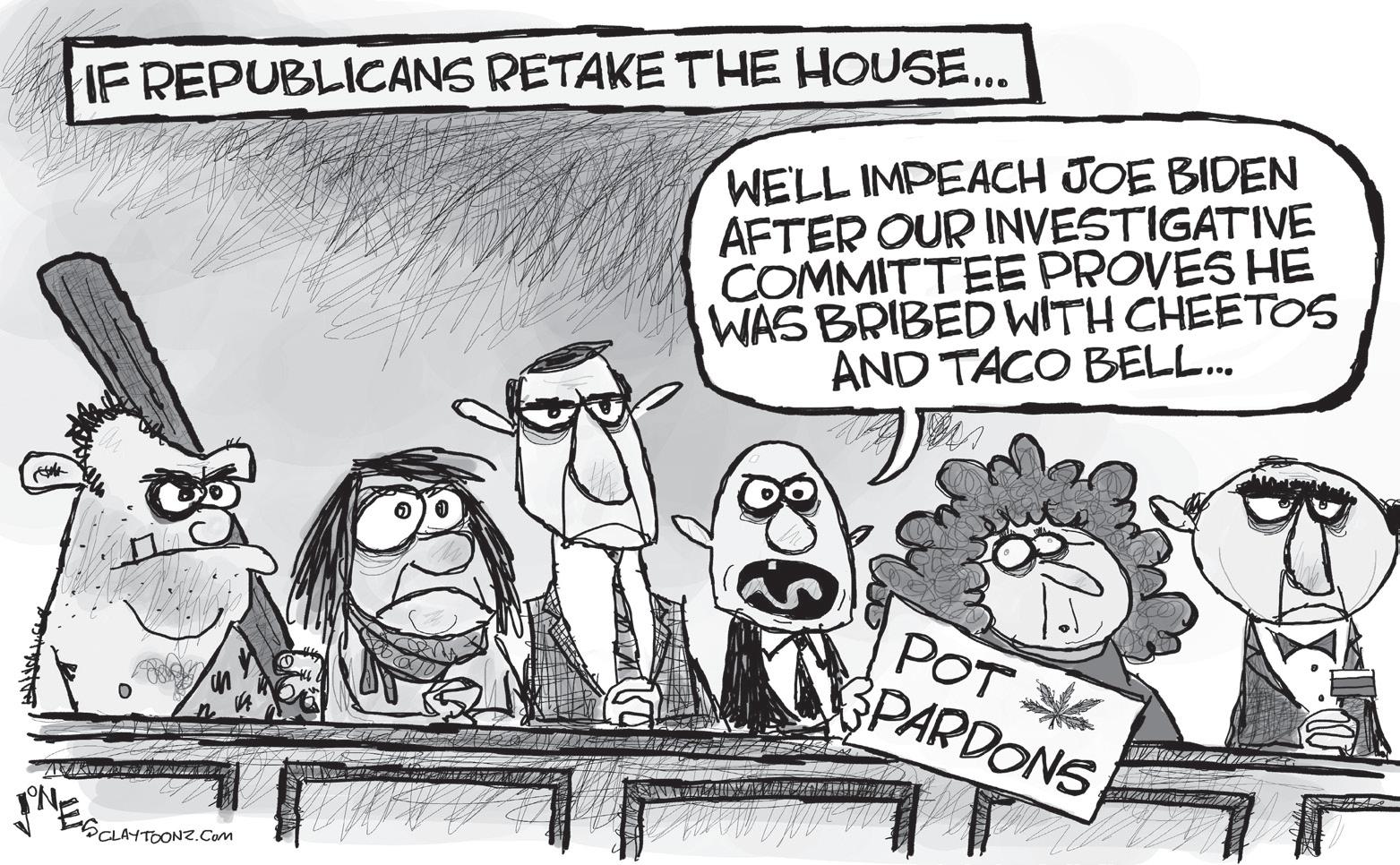
like these, which impact
leaders
and demands.
Brown
most
Pillars
Continued
harmed by White supremacy but no one tells them this. To have practiced that level of brutality to everything else on the planet is a violation of life. Their souls cannot help but be damaged by wielding that much hate and disdain for so long.
We offer the teachings to anyone who wants to par ticipate, but we do not have anyone come to study others. If you come to the Cultural Wellness Center, you come to study yourself. Our curriculum is about cultural self-study. We don’t teach diversity/inclusion, we teach cultural self-study and cultural empowerment, knowledge, and value systems.
MSR: How hard is it to successfully appeal to funders who do not look like us?

Mother Atum: The reality is even if the funder does look like us, it’s not their money. We encourage any foundation staff person to visit and see firsthand what we offer here.
we are faced with systemic inequities, but they are not debilitating in the sense that we cannot think, act and produce for ourselves.
MSR: How would a full embrace of village elders impact our communities?
Mother Atum: First thing is that if you see someone who is 79 or 80 years old who is still teaching, working, and giving love and respect to their dis ciplines, you say to yourself, “I can do that too.” Elders bring hope, vision, lots and lots of knowledge from the past, and stories of our proven capaci ties to endure and to hold our selves together under major atrocities. As Elders, we teach resiliency just by our presence.
MSR: What is the Doula program?
Mother Atum: We have to take care of our babies and our pregnant mothers.
Doulas were sometimes called midwives but had to have a medical license to prac tice their skills. However, the lay midwives were not medi cally trained but were women from the community or family members such as aunts, grand mothers, or even neighbors
Our people who jumped to their deaths from the slave ships—are they any less heroic than the ones who died at the hands of the oppressor?
support, a caring touch, and a warm spirit to that newborn as we welcome a new member of our community. As for an age requirement, to join the pro gram one must be 18 and older.
MSR: Let’s talk about the Health Hub Kitchen and “healthy soul food.”
Mother Atum: We look forward to the opening next month inside the Midtown Global Market, where we are also one of Midtown’s own ers. This is something that we have been working on for more than 15 years. We started with something called the backyard initiative, but the Health Hub is about four or five years old.
In the hub, you can interact with numerous health activi ties. It consists of more than just food. There’s walking, Zoomba, massages, teaching, meditation, and movement activities. We also just added an amazing commercial kitch en to the health hub where we’ll utilize ancient grains as key ingredients in soul food.
The reason we use ancient grains is that we teach that food is medicine and culture. Ancient grains are defined as the grains we left behind dur ing the process of being stolen from our lands in Africa. This means we also lost the natural foods we grew and consumed in those times.
Many of these grains will already be familiar, and some will not. We mix these grains in soups, stews and bread. We have a culinary extraordinaire to oversee our kitchen and healthy meals.

Our kitchen is not a restau rant but instead a testing kitchen for new and old recipes where we will create meal kits, grab bags, and offer classes to learn how to use healthy ingredients.
give us your meaning and why it is so important for our community.
Mother Atum: Cultural well ness is an approach to resur recting our culture, heritage, and ways of knowing. We teach courses to many people and offer institutional coaching and organizing and gathering of people, so their voices will be heard. Our primary job is to our
people together so that they can speak, teach, and tell what they know, and share their thoughts on important issues.
MSR: I’ll conclude with this: In respecting our heritage, what is the best way to pay tribute to our ancestors?
Mother Atum: We should acknowledge that they taught us many things and we should
be willing to continue shar ing those things. Secondly, we should do rituals and ceremo nies for our ancestors, calling them out and honoring them regularly. We should do some thing at least three times a day to honor our ancestors.
Al Brown welcomes reader responses to abrown@ spokesman-recorder.com.


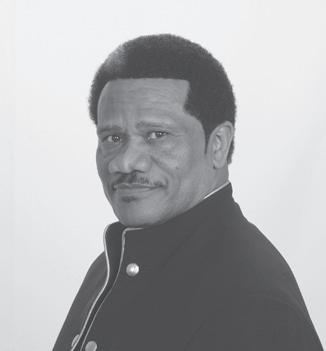
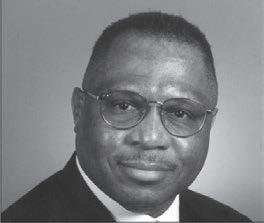


Yard waste pickup returns with extended run due to popular demand

On Oct. 3, yard waste pickup returned to weekly collection for all cus tomers. The yard waste season will end on Friday, December 2.
City customers with late dropping leaves have often urged Solid Waste and Recycling to extend the yard waste season. Listening to resident needs, officials have extended the yard waste season through November.
Your garbage day during the week of Nov. 28–Dec. 2 will be the last pickup of leaves, brush, and other yard trimmings.There will be no addi tional service after your last scheduled pickup.
MSR: How do we handle where blame is placed for our condition after enslavement?
Mother Atum: At this point, it serves us no purpose to blame the enslavers or modernday educators for what they taught us as they mis-educated our people. I know that it’s hard for us to have this discussion, but blame and shame do not help me because it doesn’t feed my soul or my heart.
So, it comes down to which energy you want to feed. Do you want to feed the common perception that if you are a vic tim there must be a perpetrator, so in your mind you have to create one? I said that to say we are not victims anymore. Sure,
or church members offering support to mothers during and after childbirth.

MSR: How excited are the women in your Doula program and are there age restrictions to join the program?
Mother Atum: We have young women who are excited to learn this from older women and experienced birth atten dants. They are learning that the birthing process is a collec tive process. A baby does not come simply to an individual—a baby comes to a family and a community.
So we want the mother and father to have support in the birthing process. We teach the doulas to learn how to provide
MSR: The Dinner Dialogue also sounds viable and like a fun time.
Mother Atum: The Health Hub provides dinner dialogues for people with diabetes, heart disease, and kidney ailments. COVID interrupted the dia logues, but people are starting to come back. So how it works is that you come to the Mid town Global Market and you get to taste and test all these recipes along with receiv ing instructions from experts, including dieticians and guest speakers. You will also be taught to enjoy food that is healthy for you.
MSR: For those not clear about what the concept of cultural wellness is, please
Employment & Legals
PreP
Contunued from page 14
72-44. In addition to being selected as the Metro Play er of the Year, Horton also earned the honor of being named Ms. Basketball.
2000: Johnnie Gilbert, Tony Travis, Edwin Huff and Greg Patton led Minneapo lis Patrick Henry, coached by Larry McKenzie, to the Class 3A boys basketball championship with a 59-45 win over St. Thomas Acade
View
Contunued from page 14
are too chatty and rarely educate the viewer in the process.
But McCaa and I do heartily agree on this—vol leyball at all levels needs to be more diverse. “I think there needs to be some ef forts to get more girls of color, Black girls, playing,” he pointed out.
Furthermore, unless the volleyball player is playing club or considered a toplevel recruit, as Gabby was once seen, getting seen by college coaches is hard since they use club or trav eling volleyball as fertile recruiting sources. A few years ago, as he tracked his daughter’s progres sion, McCaa had a bright idea: Help other parents like himself get their play ing daughters noticed. He then developed a mobile app called E-Z Volleyball.
“I designed this for par ents who are like me,” ex plained McCaa. “I was re cording everything…trying to generate some interest in my daughter. I ended up
SOe

Contunued from page 14
the day it’s not about me. It’s a team sport.”
Besides her blocking ability, Booth said, “We connect with each other and check in on each other, hold each other up and hold each other accountable. We
my. It was the first state title for the Patriots since 1945.
2001: Head Coach Larry McKenzie, along with play ers Forest Bryant, Zerek Knight, Terry Pettis and Lawrence McKenzie, led Minneapolis Patrick Henry to their second consecu tive Class 3A state boys basketball title, defeating St. Thomas Academy 74-61.
Dr. Mitchell Palmer Mc Donald welcomes reader responses to mcdeezy05@ gmail.com.
talking to a lot of African American dads.”
So, unless the player, especially a Black player, is top-level, playing on a top-level club team play ing against top-level club teams, the player is outside the eyes of coaches. This is where his app, which can be downloaded from the Apple App Store, can help in this regard, McCaa stressed. “It does recording. It does live streaming, does highlight videos, uploads to You Tube.”
As for Gabby, “She’s happy,” said her father. “We’ve got two daughters here [at Wisconsin].” His other daughter Tayler is a UW freshman but not play ing. “It’s a four-to-five-hour drive.”
McCaa is bullish on vol leyball whether his daugh ter is playing or not. “I’m obviously passionate about the sport,” he said. “I have a daughter that plays, and that’s a big part of it. I still love the sport.”
Charles Hallman wel comes reader responses to challman@spokesman-re corder.com.
know that we are going to be there to hold each other up and to hold each other accountable to the high standards that we set for ourselves.
“I’ve been acclimating and getting better every day.”
Charles Hallman welcomes reader responses to challman@ spokesman-recorder.com.

THIS SUMMONS IS DIRECTED TO the above-named Defendant:


1. YOU ARE BEING SUED. The Plaintiff has started a lawsuit against you. The Plaintiff’s Complaint against you is attached to this summons. Do not throw these papers away. They are official papers that affect your rights. You must respond to this lawsuit even though it may not yet be filed with the Court and there may be no court file number on this summons.
2. YOU MUST REPLY WITHIN 20 DAYS TO PROTECT YOUR RIGHTS You must give or mail to the person who signed this summons a written response called an Answer within 20 days of the date on which you received this Summons. You must send a copy of your Answer to the person who signed this summons located at: Brantingham Law Office 2200 E Franklin Avenue, Suite 202 Minneapolis, MN 55404
3. YOU MUST RESPOND TO EACH CLAIM. The Answer is your written response to the Plaintiff’s Complaint. In your Answer you must state whether you agree or disagree with each paragraph of the Complaint. If you believe the Plaintiff should not be given everything asked for in the Complaint, you must say so in your Answer.
4. YOU WILL LOSE YOUR CASE IF YOU DO NOT SEND A WRITTEN RE SPONSE TO THE COMPLAINT TO THE PERSON WHO SIGNED THIS SUM MONS. If you do not Answer within 20 days, you will lose this case. You will not get to tell your side of the story, and the Court may decide against you and award the Plaintiff everything asked for in the complaint. If you do not want to contest the claims stated in the complaint, you do not need to respond. A default judgment can then be entered against you for the relief requested in the complaint.
5. LEGAL ASSISTANCE. You may wish to get legal help from a lawyer. If you do not from a lawyer. If you do not have a lawyer, the Court Administrator may have information about places where you can get legal assistance. Even if you can not get legal help, you
Teaching Assistant (Multiple Positions) Savage, MN
new people
older adults,
receive a stipend.
be age 55 or older.
more by calling
or visiting lssmn.org/volunteer/ seniorcompanion/mnstate.
people
Your
Teaching Assistant, M-F. Full time.
for super vision & daily class functions. Observes all rules & regulations
Primrose School of Arden Hills & Shoreview & the local, state or national regulatory agencies for health, safety & care of children. Implements lesson plans & follows the Primrose Bal anced Learning® curriculum. Maintains well-kept classroom. Provides Acceptance to children & provides clear expectations for the children's behavior. Responsible for maintaining clean liness in classroom, common use areas & playgrounds. Main tains professional appearance adhering to Employee Handbook. Must be able to lift up to 35 lbs. to lift children & to facilitate programs and child safety. Assist in other capacities as needed.

Minimal Requirement: High school or GED Email resumes to:salima_mithani@hotmail.com
Research
Research Specialist, Medtronic, Inc., Minneapolis, MN. Position open to telecommuting from anywhere in the U.S. Req. Master’s deg. in Healthcare Mgmt., Public Health, Regulatory Affairs or closely rel. fld. & 2 yrs. clinical research
poss. a min. of 2 yrs. in each of the following: Premtk. & Post-mkt. clinical studies of medical devices; interpret ing results of clinical investigations; liaising w/ clinical trial sites & resolving operational issues; Good Clinical Practice; FDA 21 CFR, ISO regs. & stds., & reg. compliance guidelines for US & int’l clinical trials; RDC systems, CTMS, CDA, & RAD; & Clinical Safety inc. the assessment & reporting of clinical events to inc. AEs, SAEs & UADEs.
at https://jobs.medtronic.com/, Req. #22000KJM. No agencies or phone calls.






Medtronic is an equal opportunity employer committed to cultural diversity in the workplace. All individuals are encour aged to apply.
Citizens Alliance Bank seeks applicants for the following


Accountant - Howard Lake Teller - Watertown Customer Service Representative - Montevideo
Quality Project Engineer
Phillips & Temro Industries, Eden Prairie, MN. Req. at least a Bachelor’s or higher deg in Mech. Eng. or Industrial Eng,or closely related field, plus 7 yrs. of exp as a quality engineer. Also req. 5 yrs. exp. engaged in problem resolution via customer interfacing; 5 yrs. industry exp. w/ Automotive Quality Standard (TS16949:2009 replaced by IATF16949:2016); 5 yrs. exp. w/ Au tomotive Ind. Action Group (AIAG) core tools: APQP (includ ing Control Plans), FMEA, MSA, SPC and PPAP; 5 yrs. exp. using DMAIC, A3, 8D or other structured, data drive problem solving process. Also req. IATF16949:2016 Lead Auditor certi fication.10% domestic travel to unanticipated customer sites to attend to quality issues at request of customer.
Core Application Specialist - Clara City SVP - Market Manager - Howard Lake Loan Officer - Clara City Loan Admin Clerk - Clara City Controller - Howard Lake
Loan Servicing Specialist - Clara City, Howard Training Specialist - Clara City Branch Manager/Lender - Echo Financial Analyst - Howard Lake
Apply online at: Phillipsandtemro.com/about/careers.
No agencies or phone calls.
Sports
This Black fan is passionate about volleyball And not just because his daughter plays
Second of two parts
I attended my first college volleyball game in the mid-1980s and have loved it ever since. Despite the fact that the Minnesota Golden Gophers and other schools had Black players on its rosters over the years, seeing more than one or two Blacks sitting in the stands were a rare sight indeed.
Sam McCaa’s daughter Gabby played volley ball first at Minneapolis Southwest, then at St. Louis Park High School, a four-time Minnesota State High School All-League selection. This season she is playing her final college season at Wisconsin after transferring from Boston College. As her father, Sam dutifully followed Gabby through her travels in club, high school, and Division I college.
Like me, Sam often felt like a sore thumb at volleyball games. When I ran into him a couple of weeks ago at Maturi Pavilion where Minnesota hosted Wisconsin on a rare Sun day night match—usually games are staged on Wednesday, Friday and Saturday—McCaa was there along with other family members to watch Gabby.
up and out in lightning-like fashion and athletes of all sizes leaping up in the air or diving with out care to keep the ball alive. The game has become even faster since in 1999 it moved to rally scoring (a point on every play whether or not the team served the ball), then instituting a designated defensive player (libero in 2002).
We spoke briefly afterwards and agreed to speak further in an extended interview, which we did over the phone. “I love this sport,” ad mitted McCaa, which instantly bonded us to gether. “I find it to be exciting. [It] showcases athleticism. That’s why I like watching it.”
Watching volleyball, especially women, there’s nothing else to compare—balls flying
Being tall isn’t necessarily a prerequisite for playing volleyball, but height doesn’t hurt. Gabby is a 6-3 senior hitter/blocker. Her father said he believes seeing more volleyball games on television regularly rather than just during Olympic competition would help attract more Black fans, “and that may spark some interest.”
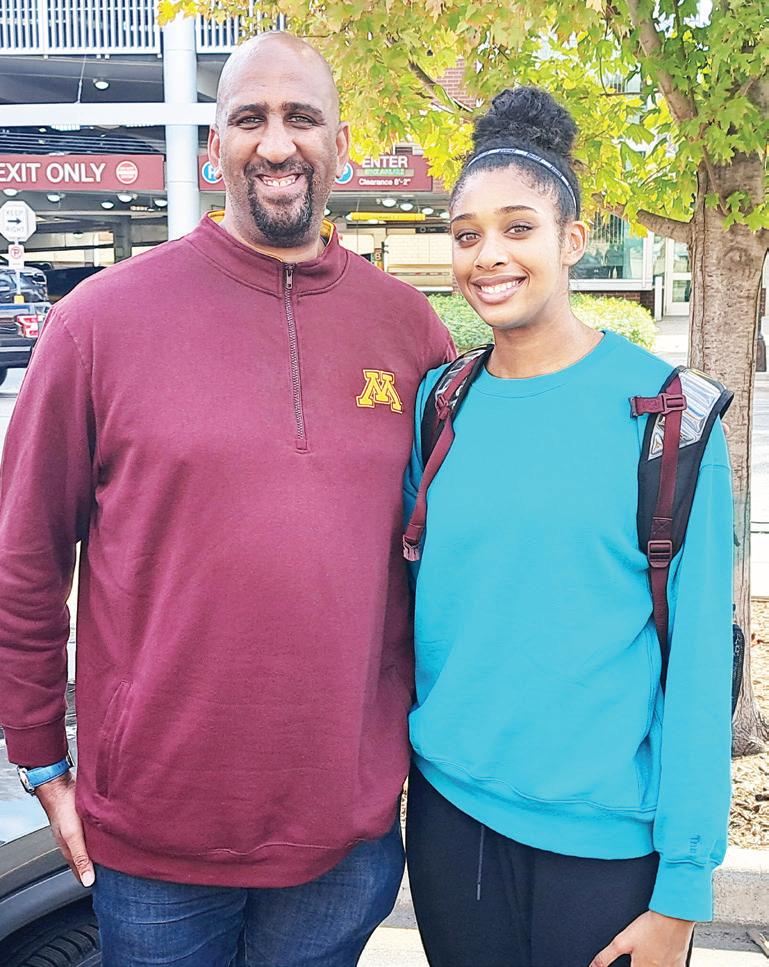
Although conference-specific sports net works such as BTN and the Pac-12 Network have increased their coverage, and ESPN of late has added volleyball to its regular sports pro gramming, more often than not the announcers
Top-ranked volleyball blocker has untapped potential
There are approximately 100 African American and other student-athletes of color this school year at the University of Minnesota. In an occasional series throughout the 2022-23 school and sports year, the MSR will highlight many of these players. This week: freshman volleyball player Carter Booth.
Carter Booth came to Minnesota as a twotime high school All-American, Colorado’s top recruit in 2022 and the number 14 overall vol leyball player in the country. Yet the 6-7 fresh man middle blocker from Denver, part of a three-player Class of 2022 ranked in the top 10, believes she has just scratched the surface, potential-wise.
“I’m far from reaching my fullest potential,” she told the MSR after her team-high eight blocks helped the Gophers to a 3-1 home win over Iowa. She came into last weekend’s match es at Michigan and Michigan State with six 5-block matches and 24 blocks in her last three matches, including pacing the visitors with six blocks in a 3-0 win at Michigan.
father once wore as a player: “He passed that down to me,” she pointed out proudly. “My oth er [three] siblings chose their own numbers, but I was the oldest so I got that [number].”
Added her father, “I think she’s mature be yond her years. I just enjoy watching her.”
Her Oct. 2 performance came in front of Booth’s parents—her father Calvin played col lege basketball at Penn State and 10 seasons in the NBA, including Minnesota (2008-09) be fore embarking on his current career as a front office exec. He began as a scout, then rejoined the Wolves as director of player personnel. He’s now general manager of the Denver Nuggets.
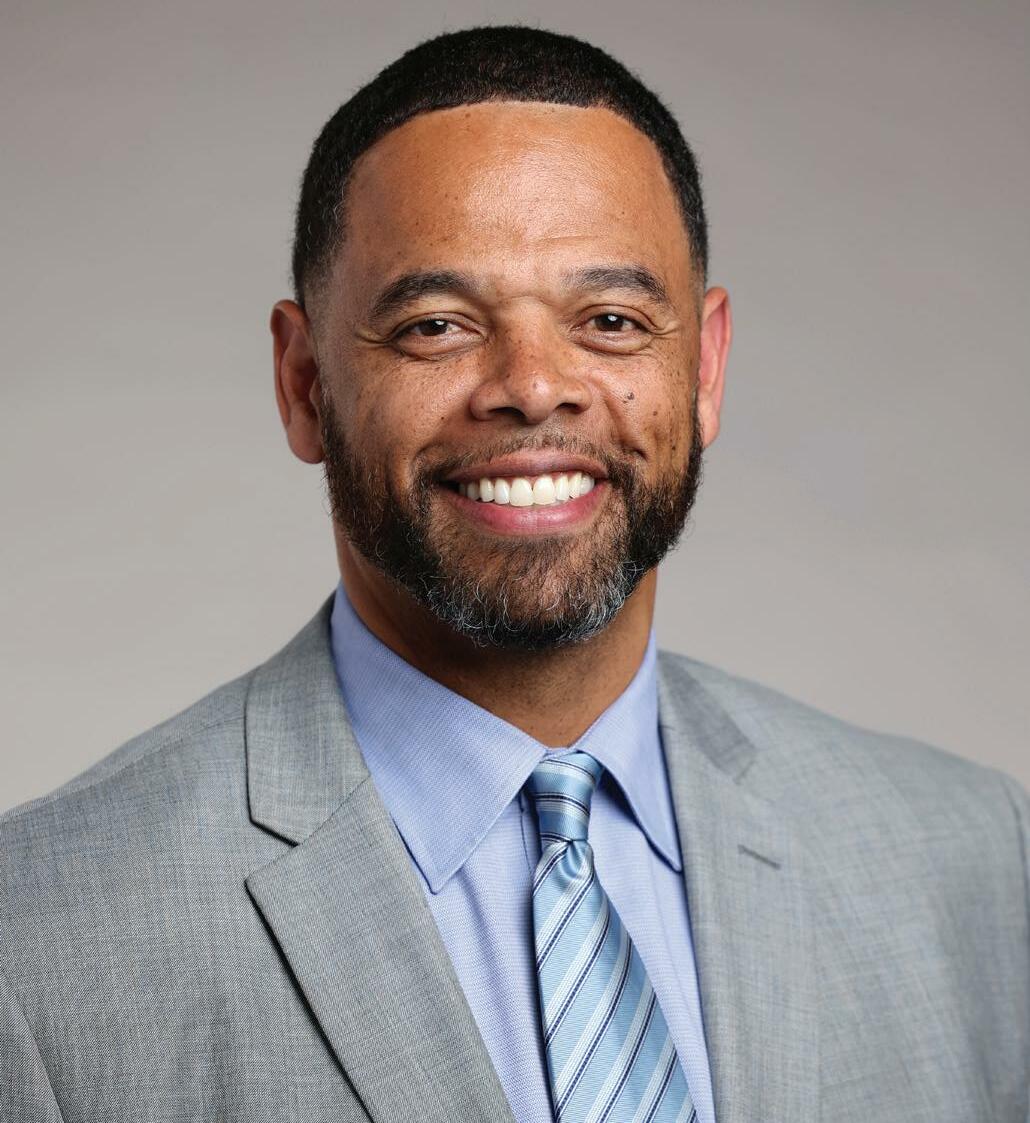
“I think she’s really bright and she’s competi tive,” said Calvin of his eldest daughter. “That gives her an edge over some other people that might be talented as well.”
Carter wears No. 52, the same number her
Wolves/Lynx sponsor events to encourage voting
By Charles Hallman Sports Columnist
November 8 is Election Day in Minnesota and across the nation. The NBA announced before the season that no games are scheduled on that day but all 30 teams will play on the night before, Novem ber 7, and will use the games to encourage fans to vote in the all-important midterms if they haven’t already done so via early voting.
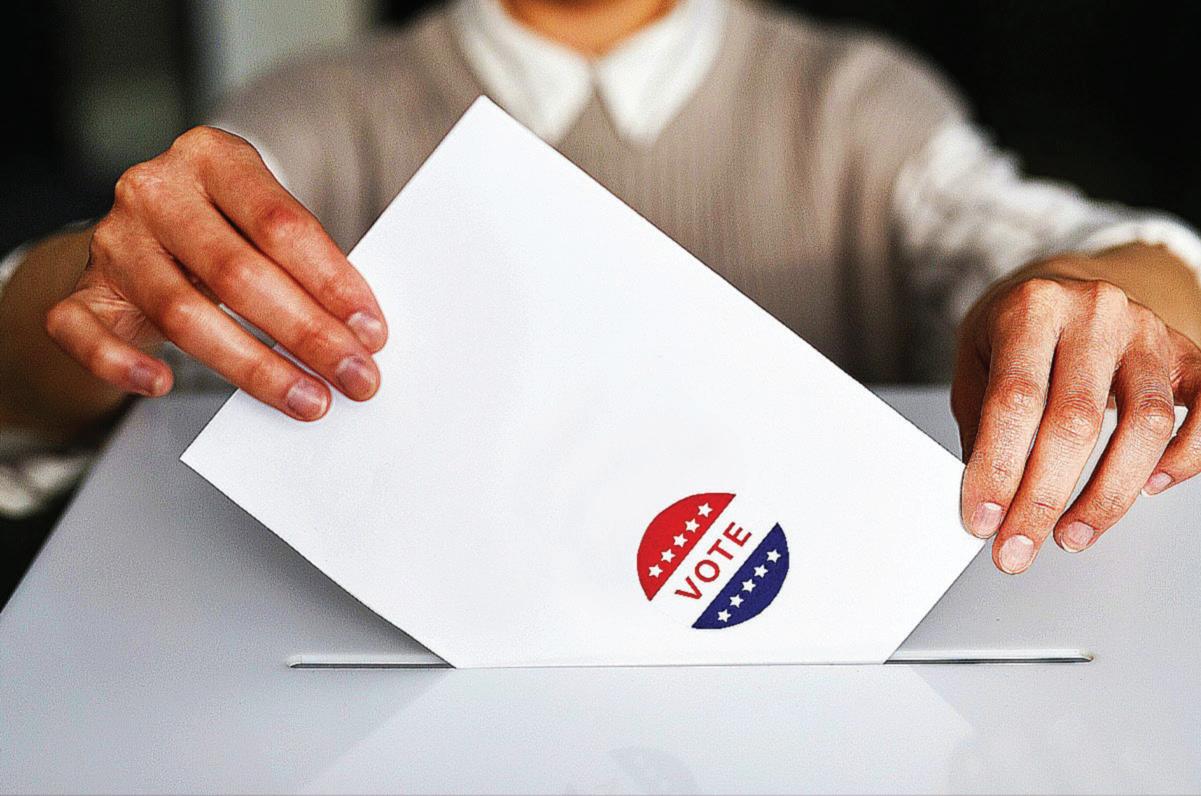
The Minnesota Timber wolves and Lynx this month have been active in emphasiz ing the importance of voting: Last Sunday the local NBA/ WNBA organization held a community event at the Urban League Twin Cities parking lot on the North Side. On Sunday, Oct. 30, the teams will hold a “Get Out and Vote” encourage ment event across from the Minneapolis Elections & Voter Services Center, 980 E. Hen nepin Ave. from 1 to 3 pm.
These two events are part of “Pack the Vote” that the Wolves and the Lynx launched two years ago to promote non-partisan voter education,
voter resources, and digital and in-person voter registra tion in the Twin Cities and other communities.

Voting is extremely im portant for all, especially in communities of color, said Timberwolves and Lynx Vice President of Social Respon sibility John Thomas. During
an MSR phone interview last week, he said, “There’s a rea son why people fought for that opportunity” to vote.
Asked if the team’s efforts could be misconstrued as pro moting a particular slate of can didates over others, he said, “I think really the message is take every chance you get to take a stand for the things that you like or don’t like,” responded Thomas, who is a Minneapolis native, Roosevelt and Minne sota graduate, and former NBA player. He cautioned all regis tered citizens against “[sitting] on the sidelines and not exer cising our right to vote.”
The November midterms elections are no less impor tant than the presidential elections. “Every single vote matters,” stressed Thomas.
“What it comes down to is we have to educate ourselves on the issues. Who are the people that are making the de cisions on our behalf? Who are the elected officials? If you like them and they’re up for office, then you should exercise your right to keep them, because it actually impacts you.
“If you don’t like them,” con tinued Thomas, “then you should also exercise your right to have them removed from office” by casting your vote.
Key important dates:
• Deadline to register in ad vance – October 18
• National Vote Early Day –October 28
• Minnesota Early Voting ends – November 7
• Election Day – November 8
Citizens can register to vote in their respective states not limited to Minnesota, and utilize available resources on the Timberwolves and Lynx Pack the Vote website below. The site provides citizens with voter education information, facts, resources and instruc tions on how to volunteer at polling sites on Election Day as well as access to the voter registration portal.
You can also text the word PACK to 26797 to register to vote, check registration status, and receive reminders leading up to the November 8 elections.
Timberwolves and Lynx Pack the Vote website: www.timber wolves.com/vote
The freshman Booth plans to major in crimi nology and law at Minnesota. “I chose that be cause law in general interests me,” she said. “My grandmother was a lawyer. She has given me a little bit of insight into some of the different fields and what I’d be interested in.”
Booth this season has seen action in every match thus far, along with nine starts. She also is one of 10 Big Ten players who have hit over .500 with double-digit kills this season.
“We have a lot of depth and a lot of talent,” she noted. “Whether or not I play or if I got enough playing time, whatever, at the end of
secutive state girls basketball titles, and two consecutive boys basketball crowns.
Editor’s Note: “Prep Flash backs” is the second of a series of seven columns highlighting the teams and players that Dr. Mitchell Palmer McDonald has covered as a prep photojournal ist since 1987. The column will run once a month.
After graduating from Cen tral State University in 1987, I began my career as a prep sports columnist at Insight News. In 1996, I moved on to the Minnesota SpokesmanRecorder.
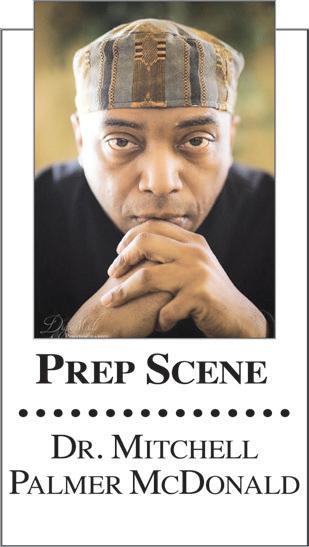
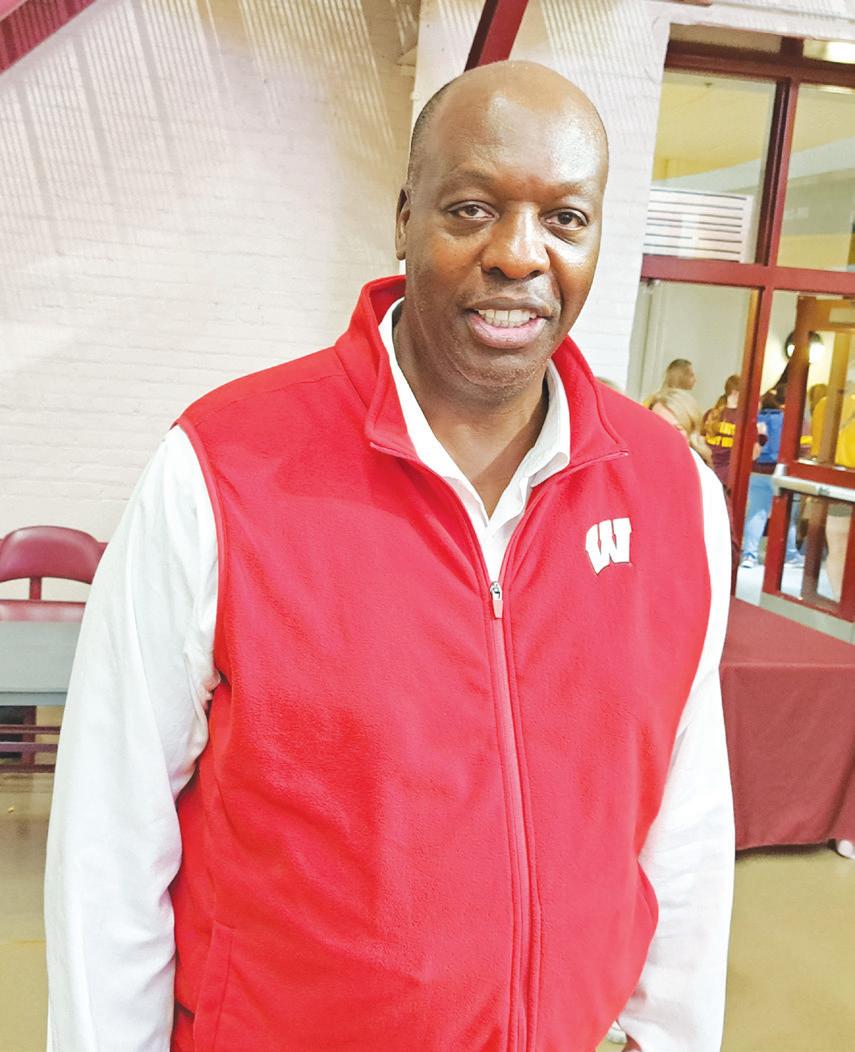

This week’s column features one event or accomplishment from each year 1997-2001.
Highlights include a team’s third-straight state boys bas ketball championship, two con
1997: Khalid El-Amin, Jab bar Washington, Ozzie Lock hart and Kevin Holley led Minneapolis North to its third consecutive state boys bas ketball championship defeat ing Stillwater 63-51. El-Amin is Mr. Basketball and selected to the McDonald’s All-Ameri can team.
1998: Tamara Moore, Mau ri Horton, and Jill Kalvik led Minneapolis North, coached by former Marshall University High School and University of Wisconsin basketball legend Faith Patterson-Johnson, to its first-ever Class 3A girls basketball championship with a 61-53 victory. Moore is Ms. Basketball and Metro Player of Year.
1999: Head Coach Faith Johnson-Patterson, along with players Mauri Horton, Tiara Medlock and Abby Reed, led Minneapolis North to its second consecutive Class 3A state girls basketball champi onship, defeating Owatonna
“I think there needs to be some efforts to get more girls of color, Black girls, playing.”Sam McCaa Photo by Charles Hallman
“At the end of the day it’s not about me. It’s a team sport.”Calvin and Carter Booth Photo by Charles Hallman
